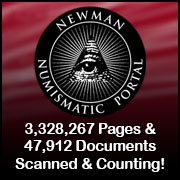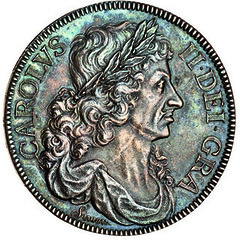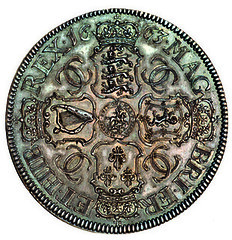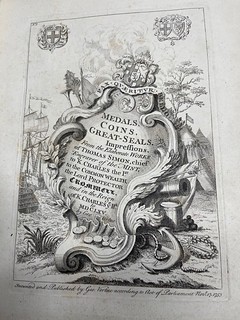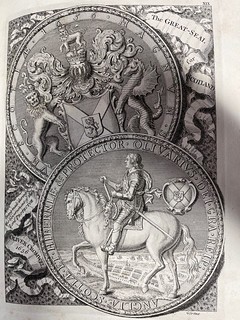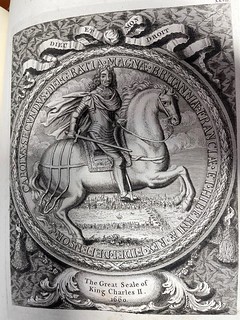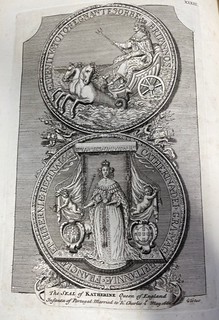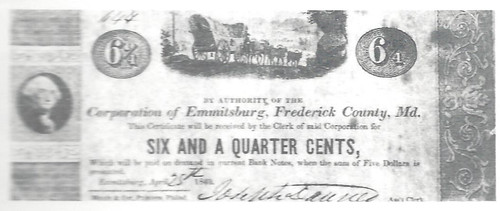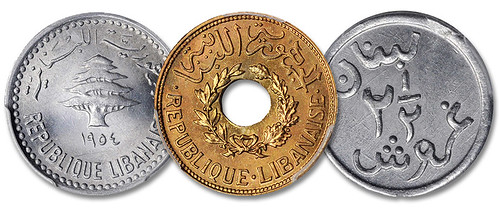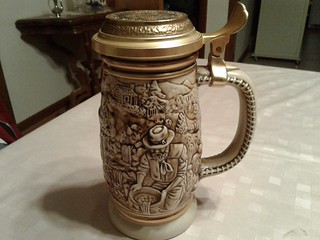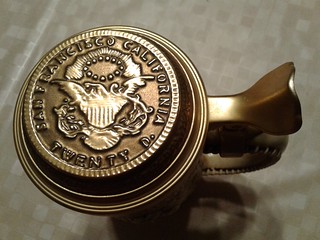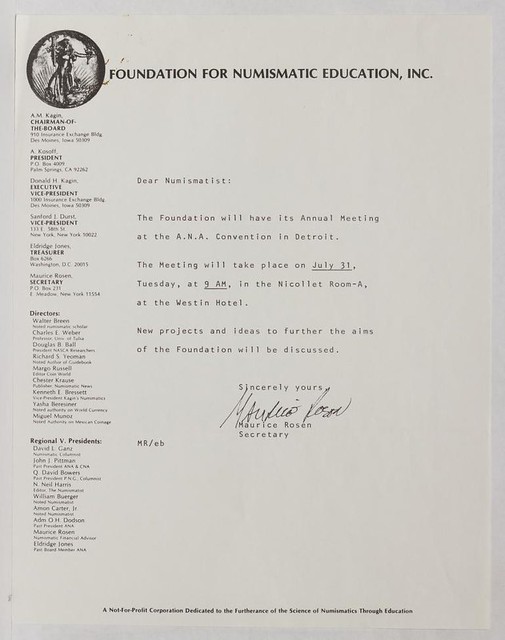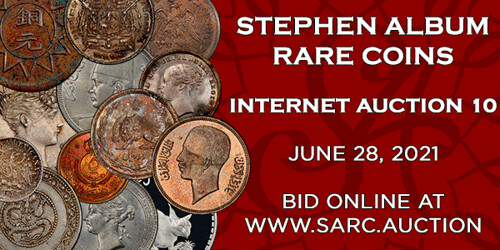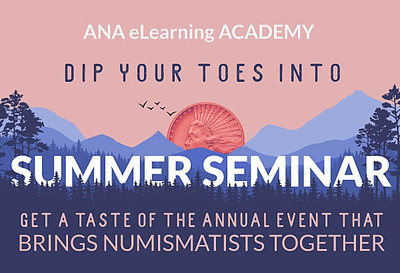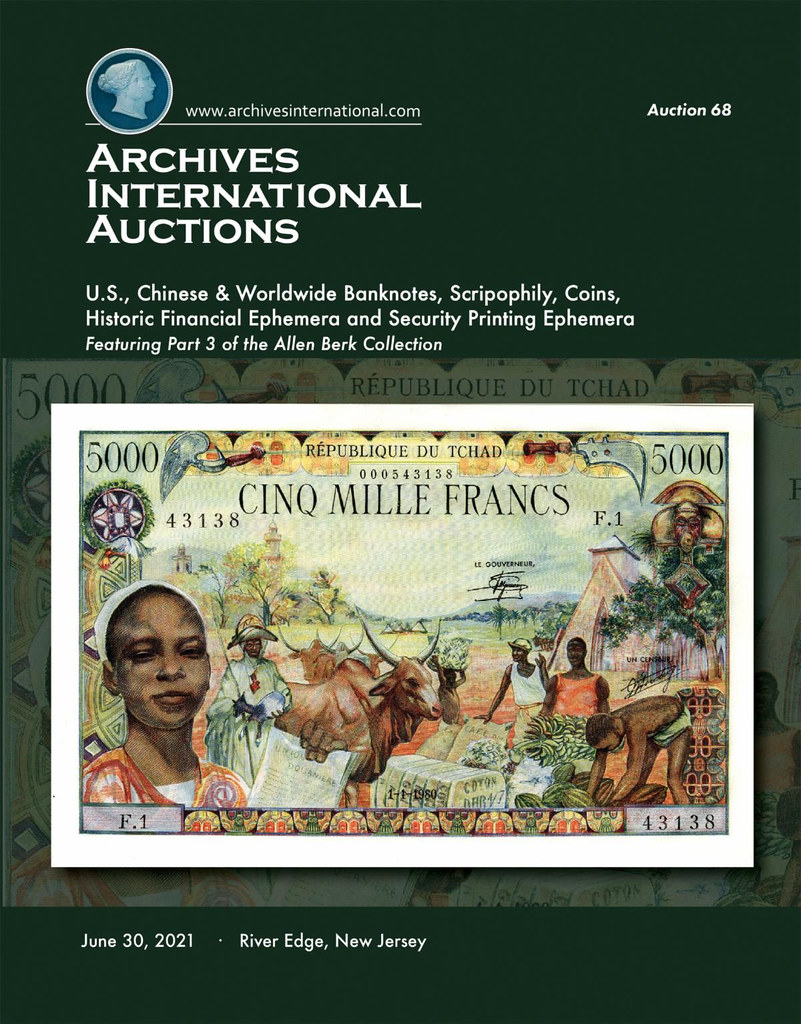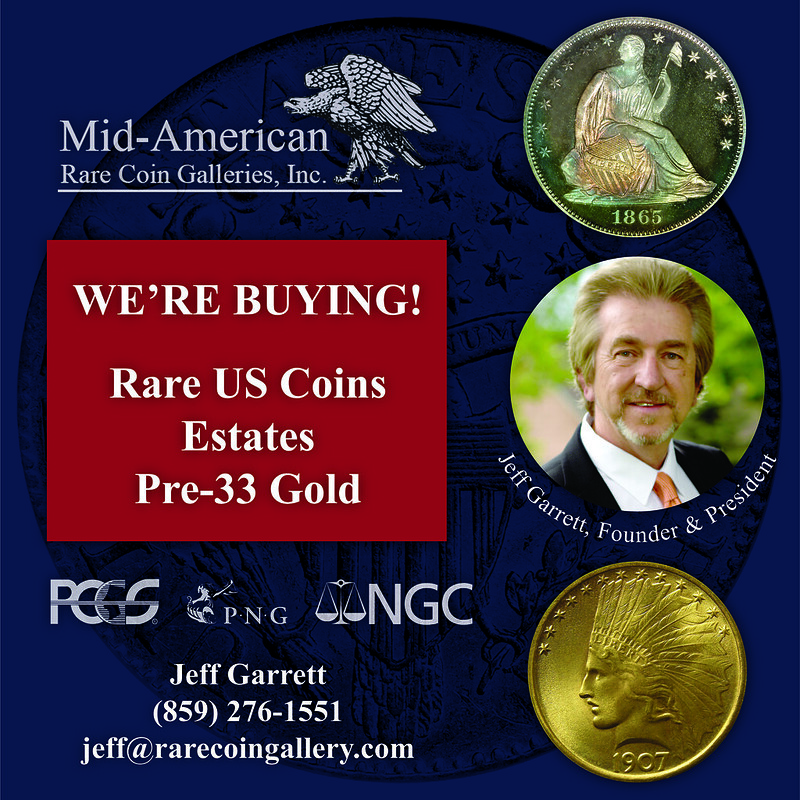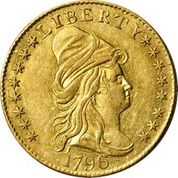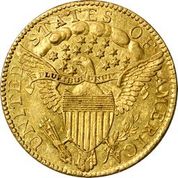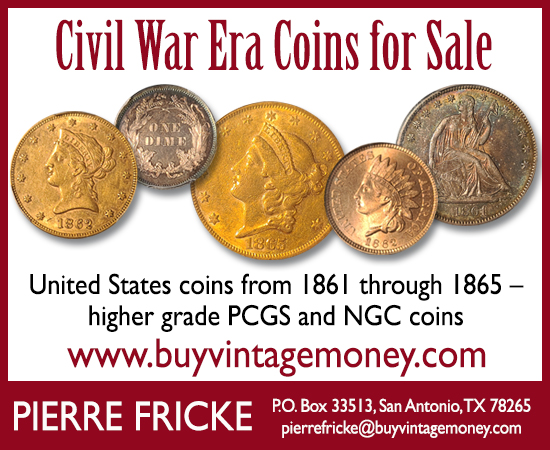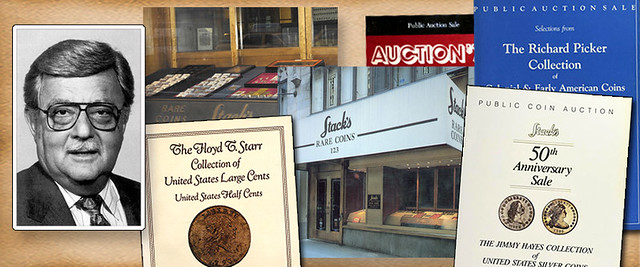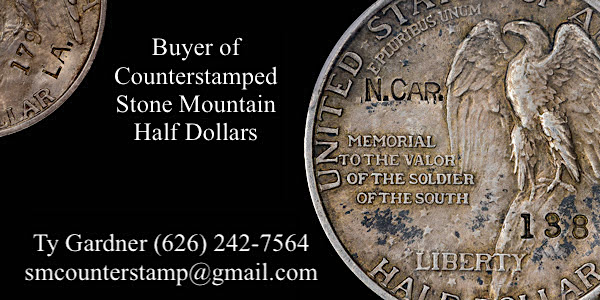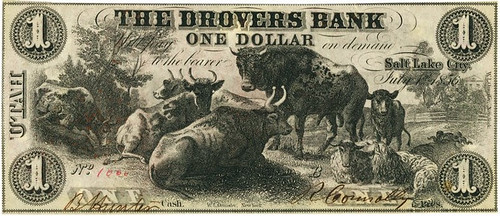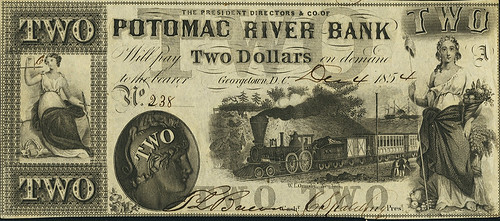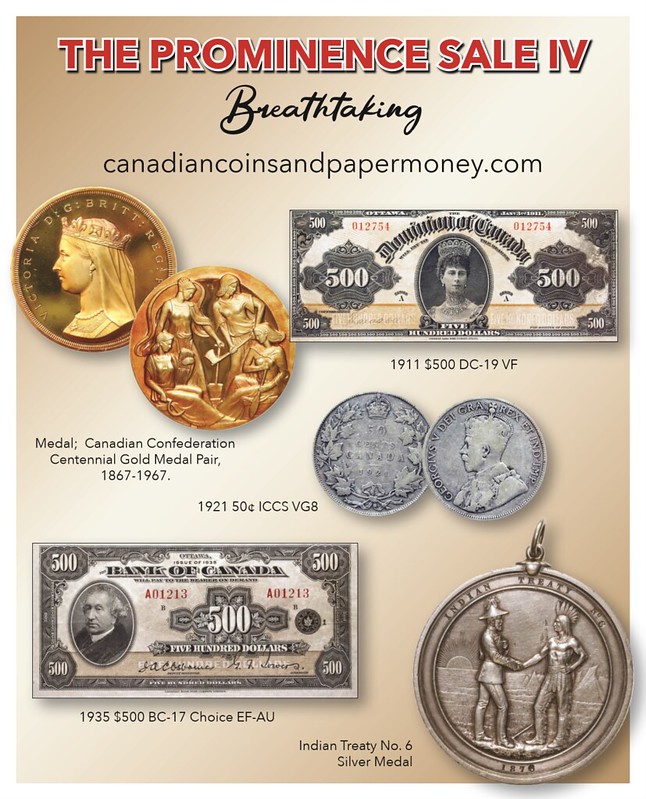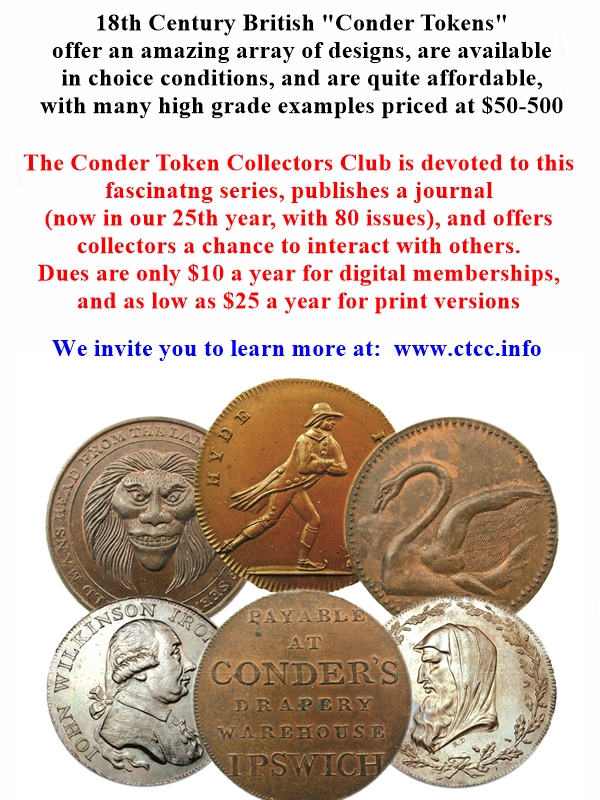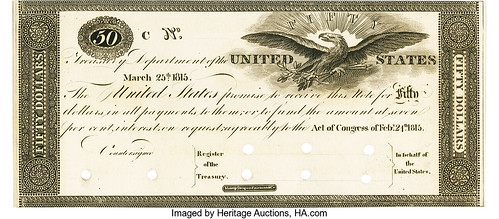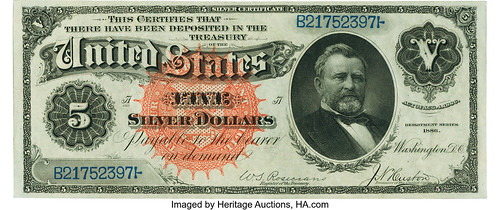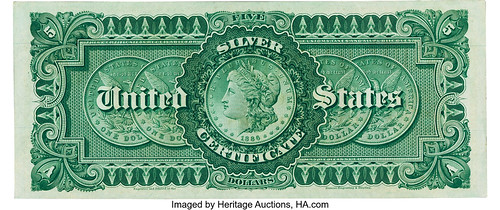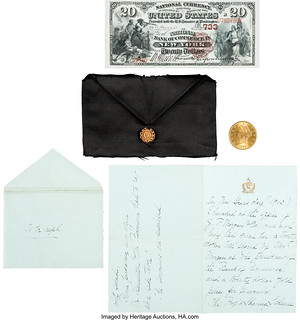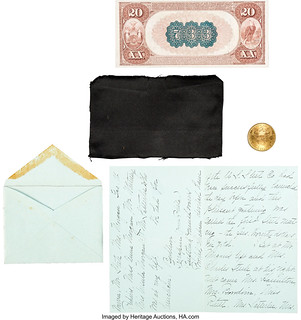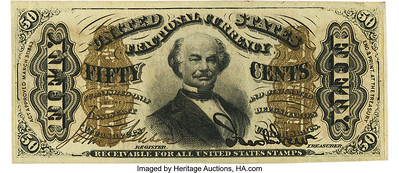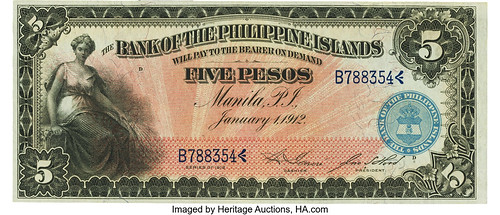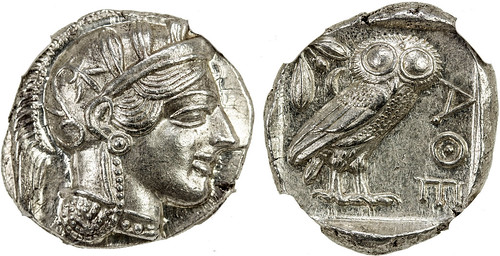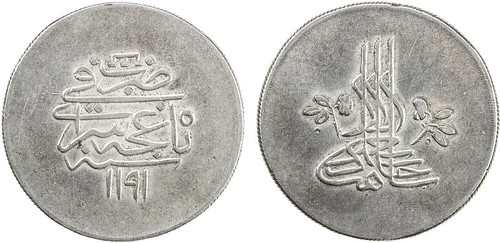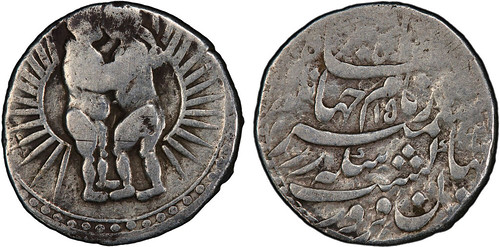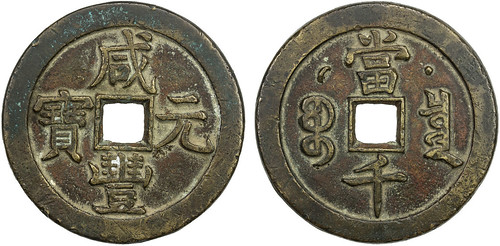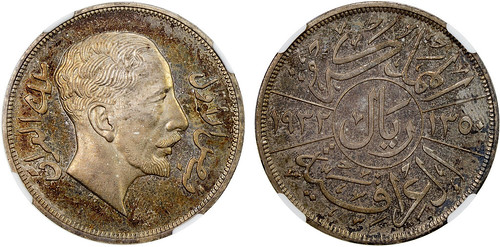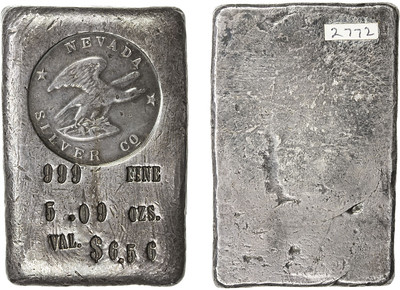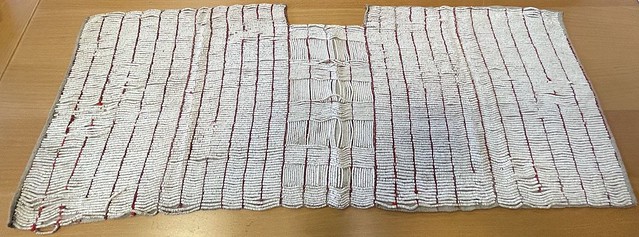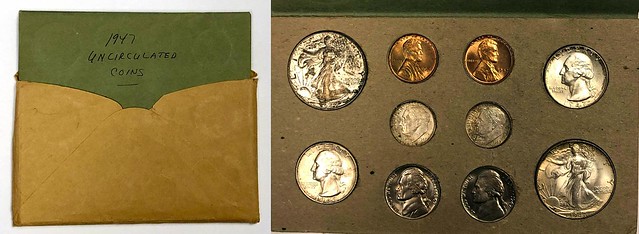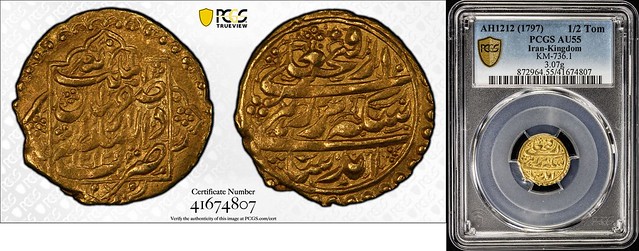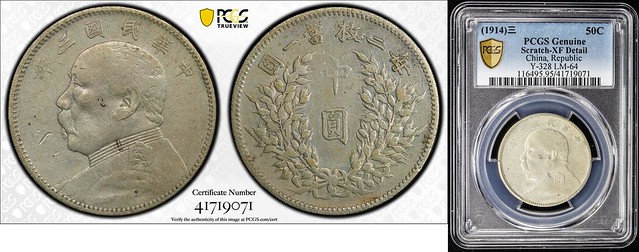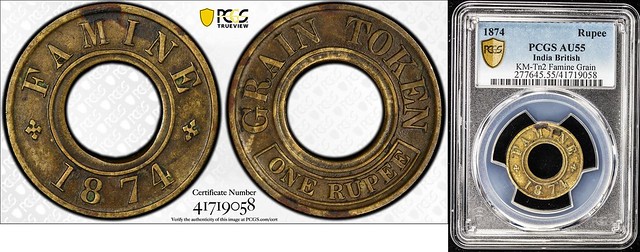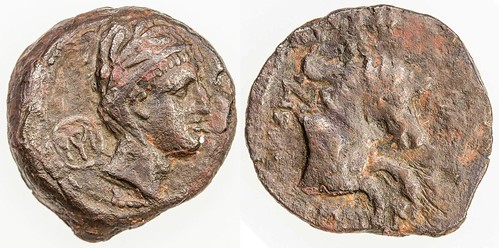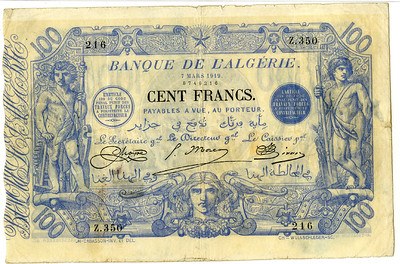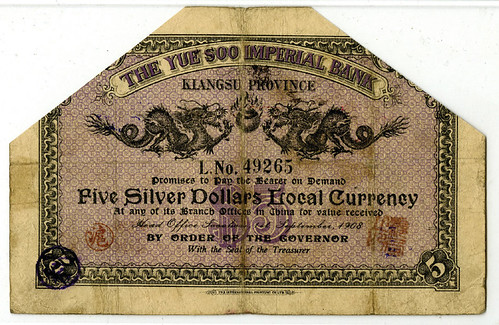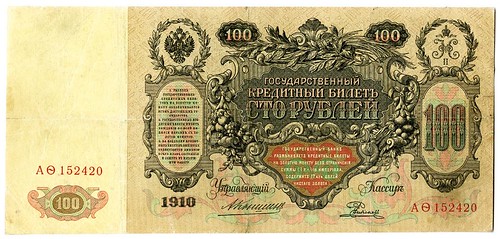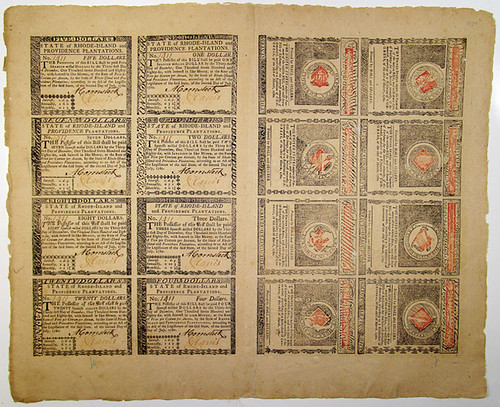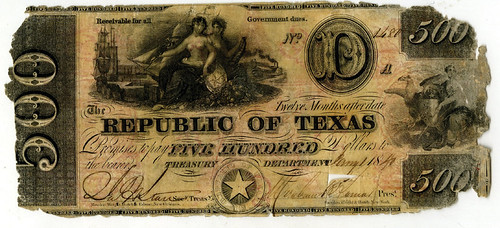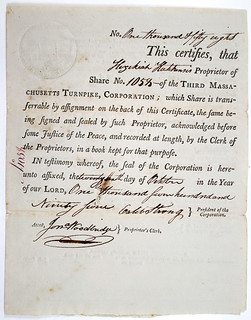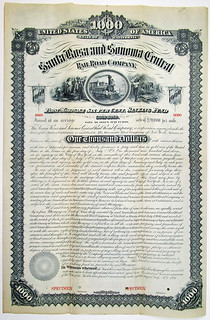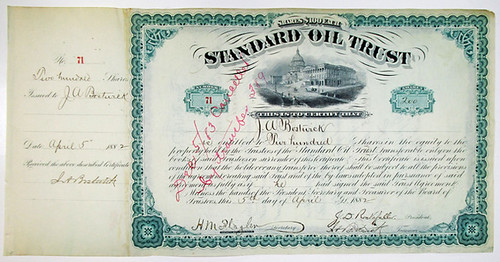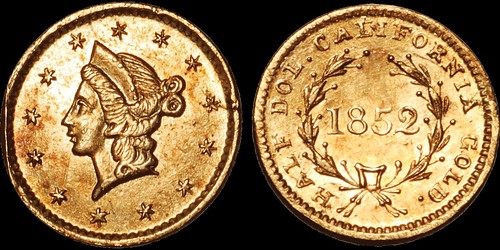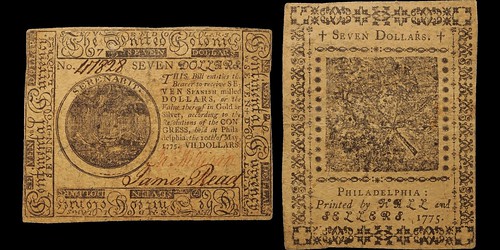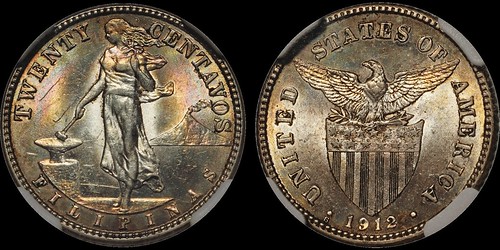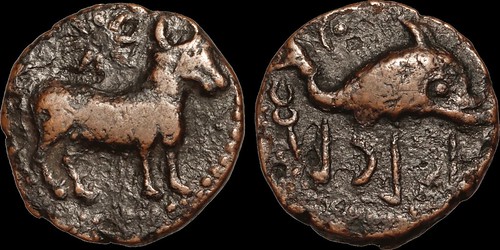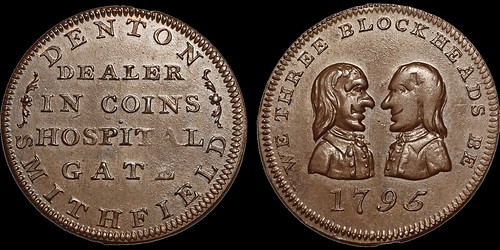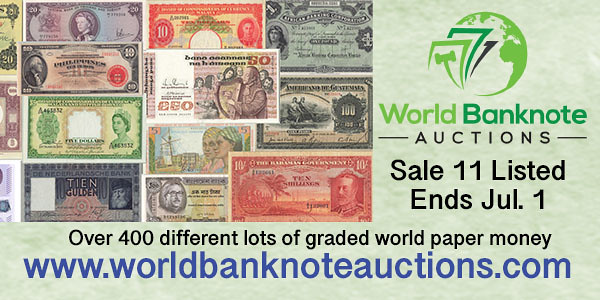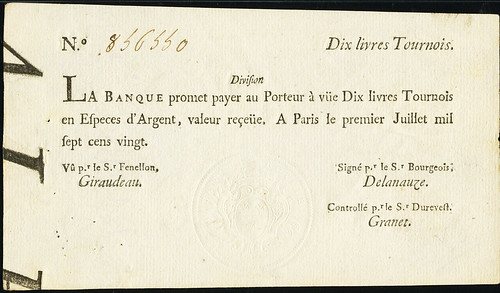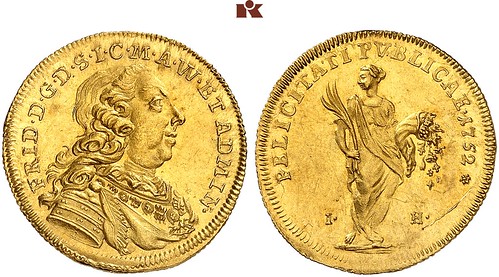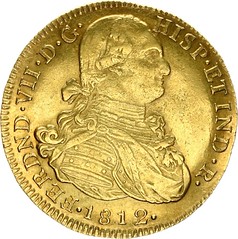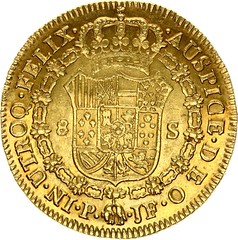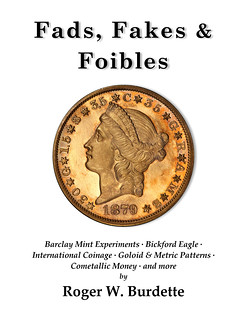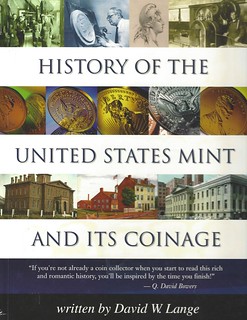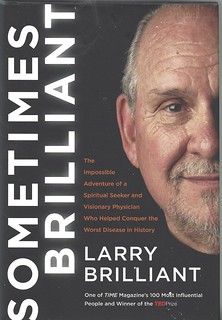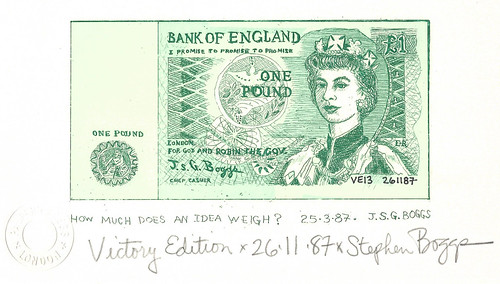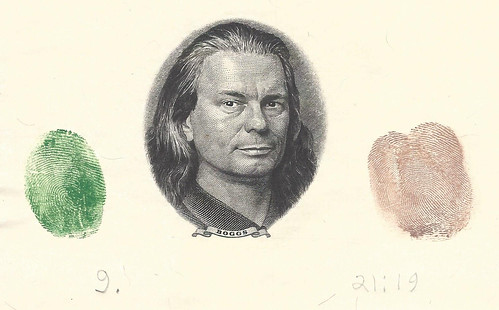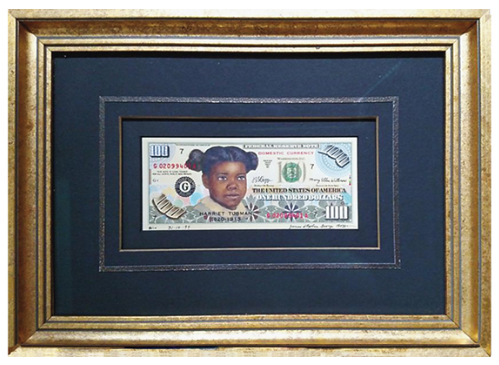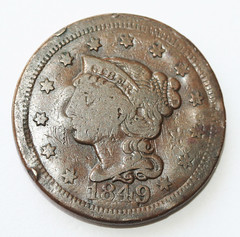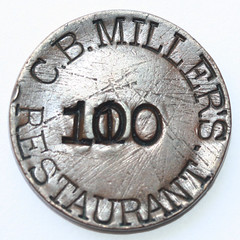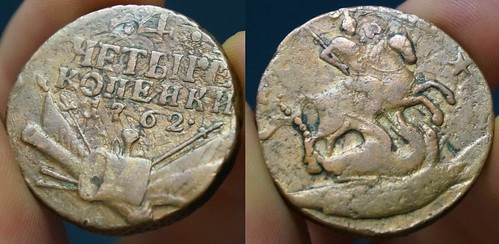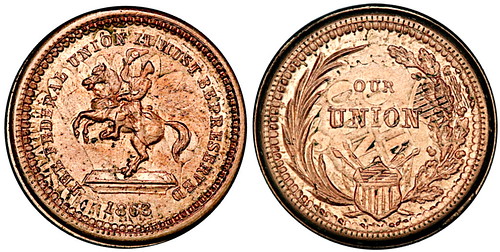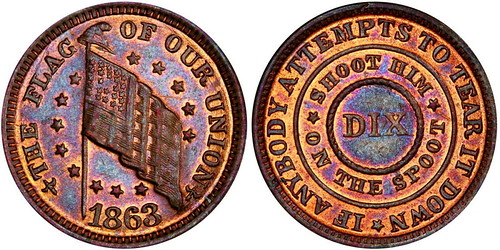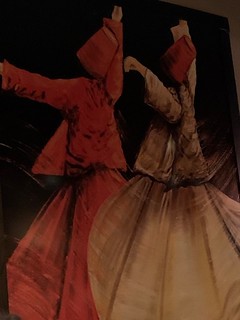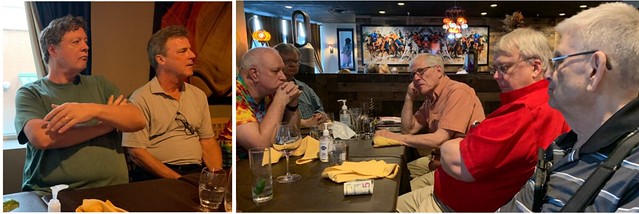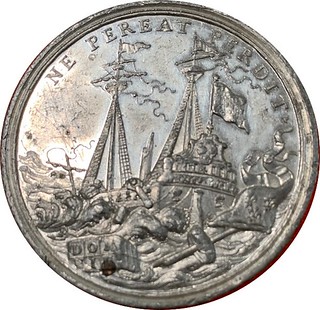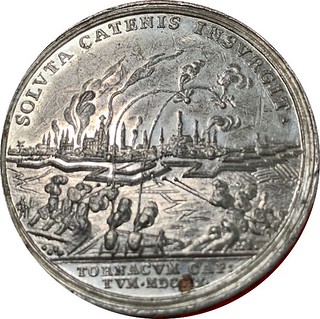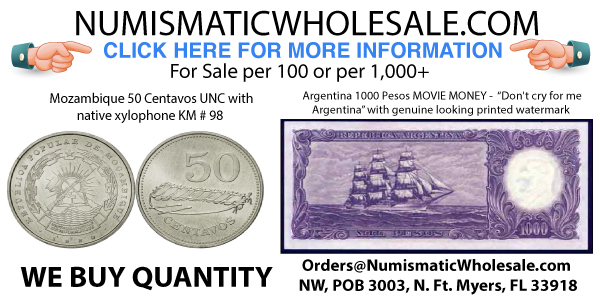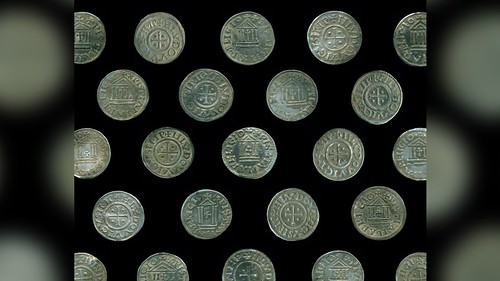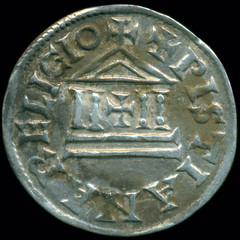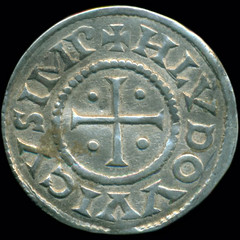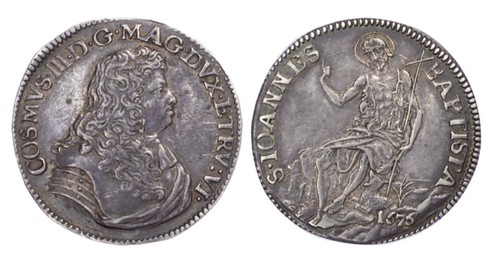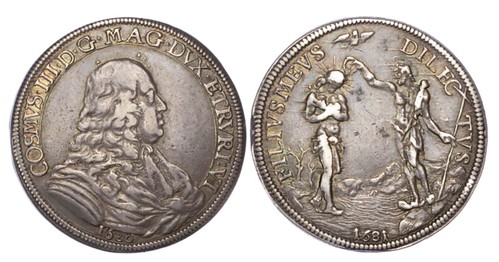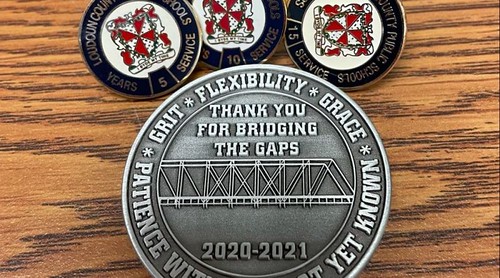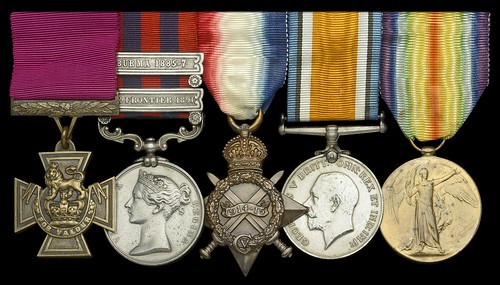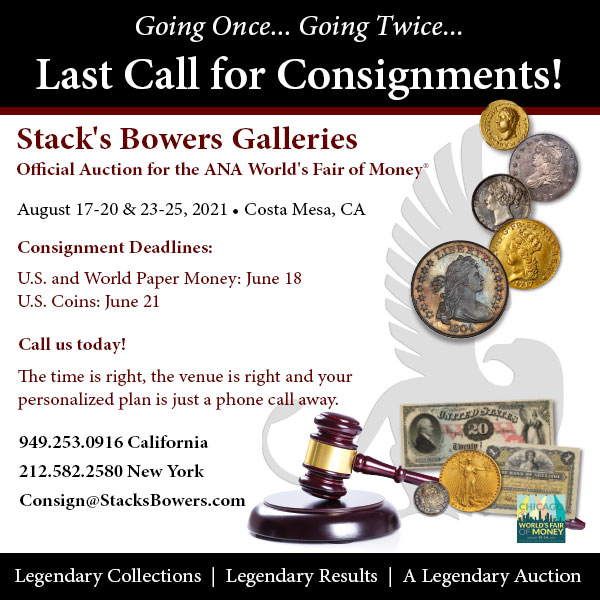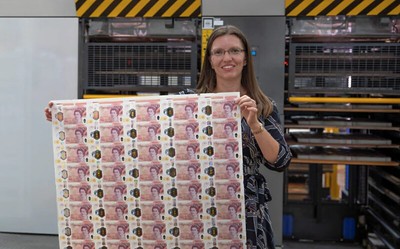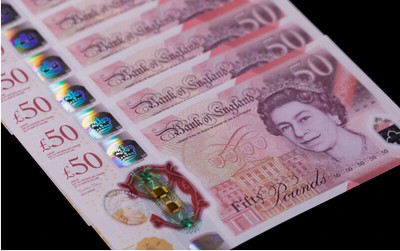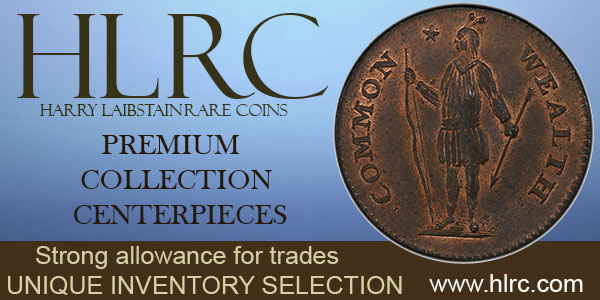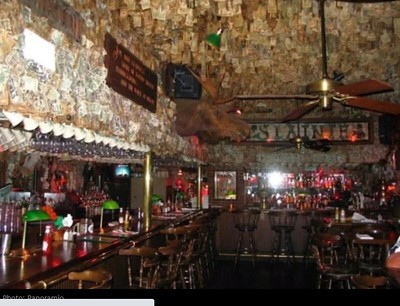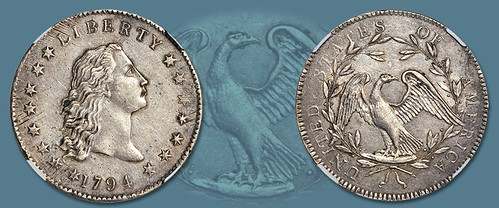
Visit our NBS Sponsors


About UsThe Numismatic Bibliomania Society is a non-profit association devoted to the study and enjoyment of numismatic literature. For more information please see our web site at coinbooks.orgSubscriptionsThose wishing to become new E-Sylum subscribers (or wishing to Unsubscribe) can go to the following web page link MembershipThere is a membership application available on the web site Membership Application To join, print the application and return it with your check to the address printed on the application. Print/Digital membership is $40 to addresses in the U.S., and $60 elsewhere. A digital-only membership is available for $25. For those without web access, write to: Charles Heck, Treasurer AsylumFor Asylum mailing address changes and other membership questions, contact Chuck at this email address: treasurer@coinbooks.org SubmissionsTo submit items for publication in The E-Sylum, write to the Editor at this address: whomren@gmail.com BUY THE BOOK BEFORE THE COINSale CalendarWatch here for updates! |
- WAYNE'S WORDS: THE E-SYLUM JUNE 20, 2021
- HELP SIMULCAST ANA EVENTS!
- NEW BOOK: CHASING THE THRILL
- NNP MINT DIRCTOR DANIEL FOX CORRESPONDENCE
- VIDEO: COLLECTING WITH DAD
- THOMAS SIMON'S EDGE LETTERING
- 1840 EMMITSBURG, MD SCRIP
- NOTES FROM E-SYLUM READERS: JUNE 20, 2021
- THE FOUNDATION FOR NUMISMATIC EDUCATION
- ANA SUMMER SEMINAR FREE VIRTUAL CLASSES
- 2021 CINCINNATI EXPO EDUCATIONAL PROGRAMS
- VOCABULARY TERM: ELECTROTYPE
- 1796 QUARTER EAGLE EX-ELMER SEARS
- ELMER SNOW SEARS (1874-1937)
- ERWIN G. WARD (1849-1920)
- HARVEY STACK'S NUMISMATIC FAMILY, PART 98
- W.L. ORMSBY, PART ONE
- MAXWELL E. BRAIL (1910-1992)
- MORE COLTRANE COLLECTION PART 2 SELECTIONS
- STEPHEN ALBUM RARE COINS AUCTION 40 RESULTS
- STEPHEN ALBUM JUNE 2021 E-AUCTION 10
- ARCHIVES INTERNATIONAL AUCTION 68
- DAVISSON'S E-AUCTION 40
- NUMISMATIC NUGGETS: JUNE 20, 2021
- WAYNE'S NUMISMATIC DIARY: JUNE 20, 2021
- CAROLINGIAN SILVER COIN HOARD FOUND IN POLAND
- GOLD COINS BELIEVED LOST IN THE BLACK DEATH
- ITALIAN NOBLE FAMILIES ON COINS
- TEACHERS GIVEN PANDEMIC MEMENTO TOKENS
- HERO OF MANIPUR'S VICTORIA CROSS
- THE BANK OF ENGLAND’S NEW £50 BANKNOTE
- PENSACOLA PUB DECORATED IN CASH
- LOOSE CHANGE: JUNE 20, 2021
Click here to read the thin version on the web
Click here to subscribe
Click here to access the complete archive
To comment or submit articles, reply to whomren@gmail.com
Content presented in The E-Sylum is not necessarily researched or independently fact-checked, and views expressed do not necessarily represent those of the Numismatic Bibliomania Society.
WAYNE'S WORDS: THE E-SYLUM JUNE 20, 2021
 New subscribers this week include:
Monte Bakasy,
Eric Paquet, and
Marc Verret.
Welcome aboard! We now have 6,635 subscribers.
New subscribers this week include:
Monte Bakasy,
Eric Paquet, and
Marc Verret.
Welcome aboard! We now have 6,635 subscribers.
Thank you for reading The E-Sylum. If you enjoy it, please send me the email addresses of friends you think may enjoy it as well and I'll send them a subscription. Contact me at whomren@gmail.com anytime regarding your subscription, or questions, comments or suggestions about our content.
This week we open with a plan to simulcast events from the ANA convention, one new book, updates from the Newman Numismatic Portal, notes from E-Sylum readers, and more.
Other topics this week include the ANA Summer Seminar, the Greater Cincinnati Coin Expo, electrotypes, Elmer Sears, W. L. Ormsby, Max Brail, auction previews, my numismatic diary, some interesting coin hoards, pandemic challenge coins, and a money-covered Penacola pub.
To learn more about Forrest Fenn's treasure, Mint Superintendent Daniel M. Fox, Thomas Simon's edge lettering, The Coin Collector, the Foundation for Numismatic Education, the Warrington Faker, Sherwood Boyd, the Republic of Texas, C.B. Miller's Restaurant, and whirling dervishes, read on. Have a great week, everyone!
Wayne Homren
Editor, The E-Sylum
HELP SIMULCAST ANA EVENTS!
NBS Vice President Len Augsburger has a request for readers; please consider subscribing to a YouTube channel so that NBS and other clubs can live stream meetings from this summer’s American Numismatic Association’s World’s Fair of Money. -Editor
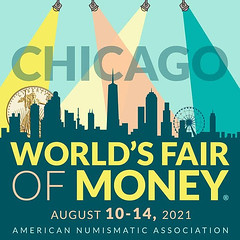 Lianna Spurrier plans to live stream a number of ANA convention events, including the NBS meetings. This will allow those who cannot attend to watch live from home. However, Lianna needs to reach the one thousand subscriber mark on YouTube in order to take advantage of their streaming services.
Lianna Spurrier plans to live stream a number of ANA convention events, including the NBS meetings. This will allow those who cannot attend to watch live from home. However, Lianna needs to reach the one thousand subscriber mark on YouTube in order to take advantage of their streaming services.
Please subscribe to Lianna’s YouTube channel (which is free, and contains excellent numismatic content) if you wish to help push us over the mark.
Link to subscribe to Lianna Spurrier’s YouTube channel (click on Subscribe
to the right):
https://www.youtube.com/channel/UCSq910l_o8m5PbXWXuGNZQg?view_as=subscriber
NEW BOOK: CHASING THE THRILL
This week the Wall Street Journal reviewed a new book on the crazy saga of Forrest Fenn's hidden treasure. -Editor
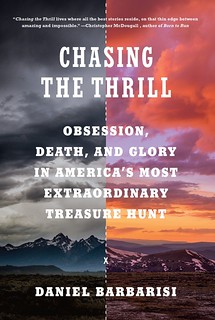 Reading Daniel Barbarisi’s
Reading Daniel Barbarisi’s Chasing the Thrill: Obsession, Death, and Glory in America’s Most Extraordinary Treasure Hunt
might feel a bit like watching a Discovery Channel documentary, but the book is quite a yarn. In fact, it’s an exhaustive account of one of the oddest episodes in the crowded annals of bizarro Americana.
The impresario of Chasing the Thrill
is Forrest Fenn, a former Vietnam War fighter pilot who made a fortune peddling Native-American artifacts and other works in arty Santa Fe, N.M. As we learn from Mr. Barbarisi, a former Wall Street Journal sportswriter and the author of an earlier book on fantasy-sports gambling, Fenn, at age 80, got the notion to hide a treasure chest in the rough country north of Santa Fe. He then printed a slim autobiography called The Thrill of the Chase,
whose final chapter released his poetic arrows into the public imagination—verses containing nine gnomic pointers to the whereabouts of the trove of 265 gold coins, dozens of gold nuggets, plastic baggies of gold dust, a block of $1,000 bills, plus rare Mayan relics, Chinese jade and more. The 42-pound cache—secreted in a smallish 12th-century Italian lock box—was valued at up to $2 million.
Word of the Fenn lode predictably set off a gold rush of tens of thousands of ambitious, greedy and often deeply disturbed clue solvers
who spent the next decade busting their brains and pondering maps, draining their bank accounts and risking their lives. They scoured The Thrill of the Chase,
followed Fenn’s frequent interviews, watched and re-watched a 2013 Today
segment he’d done, besieged his Santa Fe compound, corresponded by email, and followed a bunch of Fenn-obsessed blogs and YouTube channels. Then they traipsed through northern New Mexico, Colorado, Wyoming and southern Montana, certain that the Fenn treasure—like the mythical Land of Prester John in the Middle Ages—was just over the horizon.
The author spent years commuting from his home, job and family in Boston to the Southwest. He immersed himself in the Fenn hunters’ subculture, and pursued a number of failed solves with his wingman, Jay Raynor, a Canadian fantasy-sports wizard and crypto-currency trader. He then cozied up close to the magus, trying to get to the bottom of what motivated Fenn to launch his quest. Was he chasing a kind of pop immortality for himself? Or was he more a sadistic puppet master, savoring the spectacle of addicted hunters abasing themselves to win his favor in hopes of priceless hints to the solution? Or was he, as one cynical solver had it, simply a media whore
hooked on attention. In any case, he writes, Fenn had managed to mythologize his own past.
Besides Fenn, the book is full of oddballs, among them Bill Seattle
Sullivan, despite his moniker a homeless hunter, and one David Rice, a bearded desertphile. He describes Dal Neitzel, the loyal author of a must-read blog, as playing Paul to Fenn’s Jesus.
Mr. Barbarisi attends the 2016 Fennboree in Santa Fe, where hunters queue up to exchange a few words with the man himself. They scuttle away as pleased as if they’d had an audience with the Delphic Oracle and just as enlightened.
The dark side of Fennworld isn’t pretty. Fenn and his family live in fear of being captured by desperate or deranged hunters. Searchers are convinced competitors are trying to steal their precious solves. At least five hunters die in their wilderness quests during the course of the book. And several women tell the author that the avuncular Fenn is actually an aging #MeToo-wannabe, pressuring female questers for naked pictures and promises of sexual favors.
Indeed, the long-awaited resolution of the story is one of the least satisfying parts of the book. In June 2020, a 32-year-old former medical student from Michigan found the chest. He tried to remain anonymous, and Fenn, who died at 90 three months later, at first refused even to say where it was found. Eventually, the finder’s name—Jack Stuef—came out, and Fenn acknowledged that his treasure was unearthed somewhere in Wyoming. The author finally talks to Mr. Stuef and examines the booty in a lawyer’s office. Mr. Stuef tells him that he found the chest by getting a feel for Fenn’s psyche by painstakingly examining his writings and every utterance. But the real treasure, the detailed explanation of how he parsed Fenn’s opaque poesy—or didn’t—to hit the jackpot, is nowhere to be found in Chasing the Thrill.
To read the complete article (subscription required), see:
‘Chasing the Thrill’ Review: It’s a Mad, Mad, Mad, Mad World
(https://www.wsj.com/articles/chasing-the-thrill-review-its-a-mad-mad-mad-mad-world-11623616233)
NNP MINT DIRCTOR DANIEL FOX CORRESPONDENCE
Newman Numismatic Portal intern Garrett Ziss provided the following article based on recently added digital content. Thanks! -Editor
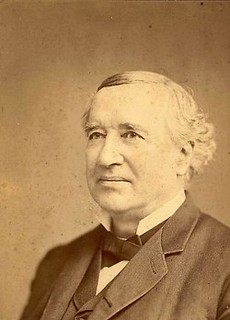 At an age when many people are ready to retire, 66-year-old
Daniel M. Fox was appointed Superintendent of the United
States Mint by President Grover Cleveland on June 19, 1885. His
prior tenure as the Mayor of Philadelphia gave him valuable
experience for this demanding position. He oversaw operations
at the Mint until November 1, 1889 and also fielded questions
and requests from the public during this period.
At an age when many people are ready to retire, 66-year-old
Daniel M. Fox was appointed Superintendent of the United
States Mint by President Grover Cleveland on June 19, 1885. His
prior tenure as the Mayor of Philadelphia gave him valuable
experience for this demanding position. He oversaw operations
at the Mint until November 1, 1889 and also fielded questions
and requests from the public during this period.
The National Archives include correspondence with
Superintendent Fox on a wide range of topics. Several of these
letters, recently transcribed by the Newman Portal, reveal the
interest that teachers and students had in U.S. coinage at that
time. For example, Principal James Jenkins of the Six Street
School is Worcester, Massachusetts, questioned whether copper, silver and gold expand in passing from the liquid to the solid state; and will the solid metal, when cast, float in the liquid metal?
Other educators were more curious about the specific denominations produced at each U.S. Mint branch and also how the coins were distributed once they left the Mint.
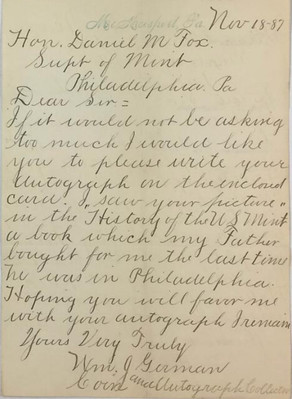 Late 19th century students were just as inquisitive as their teachers. W.G. Welsh, a high school chemistry student in York, Pennsylvania, asked Fox whether
Late 19th century students were just as inquisitive as their teachers. W.G. Welsh, a high school chemistry student in York, Pennsylvania, asked Fox whether the difference in the color of Gold Coins
is caused by the [copper-gold] alloy or is it in the metal itself?
William J. German, a young coin and autograph collector from McKeesport, Pennsylvania, respectfully requested the Superintendent’s autograph after reading a book on the history of the U.S. Mint. Fox also allowed at least one group of enthusiastic students to tour the Mint. An April 25, 1889 letter reports that Fox permitted a party of young ladies from the Langhorne [PA] Friends Institute... to visit the gold vaults and filing rooms.
What an experience that must have been!
Image: Daniel M. Fox, Superintendent of the U.S. Mint at Philadelphia (Image Courtesy of findagrave.com)
Image: Letter to the Superintendent of the Mint from William J. German of McKeesport, PA
Link to Worcester, MA letter:
https://archive.org/details/doesgoldexpandorcontractwhenheated18880309/page/n3/mode/2up
Link to York, PA letter:
https://archive.org/details/whatcausesdifferentcoloredgoldcoins18871207/page/n1/mode/2up
Link to McKeesport, PA letter:
https://archive.org/details/wantssuperintendentautograph18871118/mode/2up
Link to Langhorne, PA letter:
https://archive.org/details/wantstohaveschoolgirlsvisitmint18890425/page/n1/mode/2up
VIDEO: COLLECTING WITH DAD
These are selections from the David Lisot Video Library that feature news and personalities from the world of coin collecting. David has been attending coin conventions since 1972 and began videotaping in 1985. The Newman Numismatic Portal now lists all David’s videos on their website at:
https://nnp.wustl.edu/library/multimediadetail/522852
Here's one for Father's Day! -Editor
Being with Your Dad Can Be the Best Part of Coin Collecting.
VIDEO: 3:43.
Christopher & Matthew Wiley, Coin Collectors,
David Lisot, Interviewer, CoinTelevision.com. May 6-8, 2021.
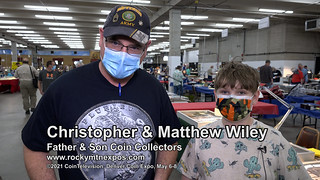 Coin collecting involves history, finances, acquisition, possession and time. It can also involve fraternization and companionship. Being together with your son or daughter while coin collecting can create some great times and memories. Hear from a father and son collecting team who seem to have understood that message.
Coin collecting involves history, finances, acquisition, possession and time. It can also involve fraternization and companionship. Being together with your son or daughter while coin collecting can create some great times and memories. Hear from a father and son collecting team who seem to have understood that message.
An excerpt of the video is available for viewing on the Coin Television YouTube Channel at:
https://youtu.be/aRzHt7xkbVI
THOMAS SIMON'S EDGE LETTERING
Gil Parsons submitted these notes on Thomas Simon's Petition and Reddite crowns. Thanks! -Editor
With regard to the brief description of edge lettering in the last issue of the E-Sylum, it might be worthwhile to mention two of the most famous examples of edge lettering: Thomas Simon, arguably the greatest English coin and medal engraver of the seventeenth century and Chief engraver of the Mint under both Cromwell and (briefly) at the Restoration, pioneered a technology for edge lettering, a significant contribution in the transition from hammered to milled coinage. One of these, the "Reddite Crown", so named for its edge lettering "Reddite quae Caesaris Caesari &ct" [Render unto Caesar, that which is Caesar's, etc], which includes in addition to the lettering an image, sold this March at Spink for an astonishing £396,000 (against an estimate of £100,000 -£120,000)!
The companion piece, perhaps even more highly regarded, the "Petition Crown", presented by Simon to the King as a protest against his displacement as Chief Engraver by John Roettier, an appointment thought to reflect more political connection than artistic virtuosity, contains the edge legend:"Thomas Simon, most humbly, prays your Majesty to compare this, his tryall piece, with the Dutch, and if more truly drawn & embossd, more grace[ful], fully ordered and more accurately engrave[d], to relieve him." This remarkably scarce type sold most recently in New York for $649,000!
Wikipedia has a good brief account of the pieces and the definitive discussion (because a book tie-in be required for the current context-lol!) is in Alan Nathanson, Thomas Simon His Life and Work.
And now, for a bit of absolutely shameless commercial huckstering: We have currently on offer the Sir Thomas Fairfax medal by Simon, together with the book which is likely the first such devoted to a single medallist: George Vertue, Medals, Coins, Great-Seals, Impressions, from the Elaborate Works of Thomas Simon, Chief Engraver of the Mint, to K. Charles the 1st, London 1753 (First edition, with engraved title and 37 plates, Morocco gilt binding)
To read the Wikipedia article, see:
https://en.wikipedia.org/wiki/Petition_Crown
Gil shared these images from the book; I added coin images above, courtesy Spink. -Editor
To read the earlier E-Sylum article, see:
VOCABULARY TERM: EDGE LETTERING, PART 5
(https://www.coinbooks.org/v24/esylum_v24n24a12.html)
1840 EMMITSBURG, MD SCRIP
Dave Hirt writes:
"Here is a clip from the Frederick News-Post 100 years ago: "that paper money was issued by Frederick County towns 80 years ago was shown by John A. Horner of Emmitsburg. He has three notes issued by the Corporation of Emmitsburg in 1840. One is dated 5/5/1840 is for 25 cents, one dated 5/25/1840 is for 6 1/4 cents, and one dated 5/28/1840 is for 50 cents.."
"Interesting, I must have 20-25 books of different states' paper money, but not my own state of Maryland."
I've always loved the 6 1/4 cent denomination, which harks back to the circulation of Spanish silver fractions or "pieces of eight" - that is, Spanish dollars cut into eight pieces or "bits". "Two bits" is a quarter of a dollar, so one bit is 12 1/2 cents and a half-bit is 6 1/4 cents.
Luckily, I have a book on Maryland scrip here in my library. Here's a poor scan of a similar note pictured on page 357 of From Money & Banking in Maryland, Maryland Historical Society, 1996. -Editor
NOTES FROM E-SYLUM READERS: JUNE 20, 2021
The Oil-Pouring Skill Test CoinTed Puls writes:
"While I was in college I offered a Lebanese classmate a few Lebanese coins that I had. He only wanted the holed 5 C denomination. I was surprised that he wanted the smallest and least picturesque coin. He explained that in his village the oil dealer had to prove his skill before selling oil, by pouring the oil through the small hole in the coin and this reminded him of home. The brass coin in the newsletter reminded of this story of many years ago."
Cool story! Thanks. -Editor
To read the earlier E-Sylum article, see:
THE EARLY COINAGE OF LEBANON
(https://www.coinbooks.org/v24/esylum_v24n24a22.html)
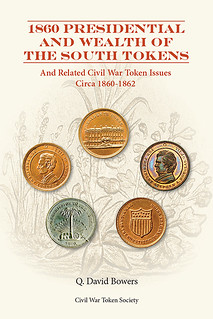 A reader writes:
A reader writes:
"Actually, the latest Bowers/CWTS book is his THIRD after Engravers and Printers and the Rhode Island book."
Correct, thank you. I hadn't noticed that the Wealth of the South book had been called the second in the series for the Civil War Token Society. -Editor
To read the earlier E-Sylum article, see:
NEW BOOK: WEALTH OF THE SOUTH TOKENS
(https://www.coinbooks.org/v24/esylum_v24n24a03.html)
Roger Burdette writes:
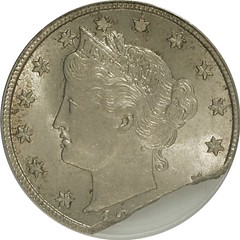 "Regarding brittle nickels - the planchets were produced by Scovill Co. The cause was eventually traced to excess heat during annealing by Scovill. The company replaced multiple shipments of planchets each time the defect was identified. 1896 was evidently the worst year."
"Regarding brittle nickels - the planchets were produced by Scovill Co. The cause was eventually traced to excess heat during annealing by Scovill. The company replaced multiple shipments of planchets each time the defect was identified. 1896 was evidently the worst year."
Thanks. Interesting topic! -Editor
To read the earlier E-Sylum article, see:
NNP ADDS LETTERS ON BRITTLE LIBERTY NICKELS
(https://www.coinbooks.org/v24/esylum_v24n23a05.html)
Rusty Goe writes:
"In Martin Gengerke’s American Numismatic Auctions (p. 149), he cites listings for a publication titled The Coin Collector.
They are as follows:
- 04/12/1957 K. O. Cunningham (In The Coin Collector)
- 01/05/1958 K. O. Cunningham (In The Coin Collector)
- 03/10/1958 K. O. Cunningham (In The Coin Collector)
- 08/05/1958 K. O. Cunningham (In The Coin Collector)
- 12/09/1958 K. O. Cunningham (In The Coin Collector)
I have never heard of this publication from the late 1950s. Its title is obviously very generic. Other publications have included it in their titles. The specific ones cited are from the 1957/1958 period.
David Hill graciously attempted to find information about this publication in the ANS library. He told me the ANS does not have copies of the issues cited. He sent me a scan of the table of contents in Remy Bourne’s American Numismatic Periodicals, 1860 to 1960, in which there is a listing for The Coin Collector.
The years of publication extend only from 1950 through 1955.
If any E-Sylum reader has access to the five issues cited above, I will gladly pay to have photocopies of them sent to me."
Can anyone help? -Editor
Dave Hirt writes:
"I have one thing that I think is rather neat. A great decoration for a numismatic library. It is a gold rush stein, ceramic and brass by Avon. A 49er panning gold, and other western scenes are pictured. On the brass top is a replica of the reverse of a San Francisco twenty dollar gold piece. The condition is like new."
We were discussing some possible trades. The stein isn't something I needed, but I agree that it's a neat decoration for a numismatic library, and Dave said I could share this with our readers. Here are the photos. -Editor
THE FOUNDATION FOR NUMISMATIC EDUCATION
Yesterday I came across a used book listing for A Treatise on the Coinage of the United States Branch Mints, the groundbreaking 1893 monograph by Augustus Goodyear Heaton. For the listed price I assumed it was a reprint, but miracles do happen sometimes so I took a closer look to confirm. I expected to see the 1987 Bowers and Merena Galleries reprint, but this was listed as a 1984 reprint published by the "Foundation for Numismatic Education." I was unaware of that reprint or organization.
So I checked the Newman Numismatic Portal expecting to as least find a Coin World article on the group. I wasn't disappointed. A 1977 article noted the group's founding by "24 hobby leaders present for the first informal session." A 1980 article listed Abe Kosoff as President and Don Kagin as Executive Vice President. There are multiple mentions of the group through the mid-1980s.
NNP also houses a small archive of correspondence between the group and Eric P. Newman, mostly announcements and minutes of their annual meetings. The group was begun before my time as an active numismatist and before I regularly attended ANA conventions. Below is a meeting announcement on the group's letterhead from the NNP archive, and notes from two surviving members. -Editor
To read the correspondence file, see:
Foundation for Numismatic Education, Inc. Correspondence, 1981-1985
(https://nnp.wustl.edu/library/book/521930)
Ken Bressett writes:
"As I recall this was a very serious effort initiated by Arthur Kagin with the objective of expanding interest in numismatics through educational programs. The members wrote articles, gave talks, and participated in various ways to encourage participation in the hobby and to extol its rewards as a valued pursuit. I found it interesting to note that the few remaining members are still actively involved in the same pursuit."
Don Kagin writes:
"My father was quite passionate about numismatic education. In the mid-1960s he created the first accredited course in Numismatics at Roosevelt University and many of the members of the Foundation were lecturers during the two years those courses were offered.
"In 1981 Dad perceived the need to provide funding for scholarships and the dissemination of educational manuscripts, particularly pamphlets and books whose authors could not find funding elsewhere. As you know many good works don’t lend themselves to breaking even, let alone making a profit. They are labors of love but none-the-less provide excellent information. As you can see he was able to assemble a number of numismatic luminaries to participate.
"The Foundation has since funded several publications and scholarships. Most recently we contributed to a Hobo Nickel Society publication.
"As you pointed out, only a few of the original members—Ken Bressett, Q. David Bowers, Maurice Rosen, David Ganz and I think Yasha-- are still with us. We don’t regularly meet these days but we would welcome you letting your readers know about our existence and anyone is free to contact me if they have a project for which they may need funding. Perhaps we can reconstitute the Foundation and add some new blood and contributors."
Thanks! That's great news. -Editor
ANA SUMMER SEMINAR FREE VIRTUAL CLASSES
The ANA is opening its summer seminar classes through the ANA eLearning Academy. Here's the announcement. -Editor
Summer Seminar is a once-a-year opportunity that offers collectors a varied selection of week-long courses designed for discovery or continued study. While this year’s event was cancelled due to COVID-19, free virtual courses will be offered through the ANA eLearning Academy in its place.
Topics will appeal to a broad range of collectors – from beginners to advanced numismatists – and will be presented by some of the hobby’s most renowned numismatists. Courses start June 21 and will last through July 2.
Fundamental Grading Theory
When: June 21, 10 AM
Presenters: Rod Gillis & Ken Bressett
Counterfeit United States Gold Coins
When: June 23, 12 PM
Presenter: Brian Silliman
Chinese-Made Counterfeit Coins
When: June 24, 12 PM
Presenter: Brian Silliman
Discovering Your Coin: How to Truly Learn About the Objects You Are Collecting
When: June 25, 4 PM
Presenter: Kellen Hoard
The Importance of Eye Appeal
When: June 28, 10 AM
Presenter: Jeff Garrett
Modern Minting Process
When: June 29, 10 AM
Presenter: Sam Gelberd
The Coinage of Roman Egypt:
A Survey
When: June 30, 10 AM
Presenter: Kerry Wetterstrom
Romano-Companian Coins
When: July 1, 10 AM
Presenter: Scott Rottinghaus
Ancient Greek Coinage; An Overview of the World's First Coinage
When: July 2
Presenter: Doug Mudd
For more information, or to register, see:
https://info.money.org/summer-2021
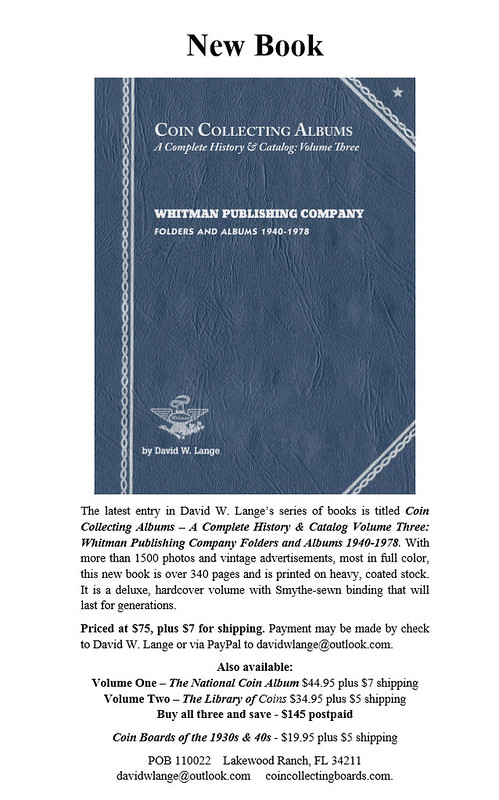
2021 CINCINNATI EXPO EDUCATIONAL PROGRAMS
For some in-person numismatic education, here's the speaker program for next month's Greater Cincinnati Numismatic Exposition. Great topics! -Editor
The Cincinnati Numismatic Association presents Educational Programs at the Greater Cincinnati Numismatic Exposition
Saturday, July 31st Starting at 10:30 am, Room 201, Sharonville Convention Center, 11355 Chester Road, Cincinnati, Ohio 45246. Each program will last 45 to 50 minutes. Admission is free.
Rarity of CAC Seated Coinage, by Stephen Petty - 10:30 am
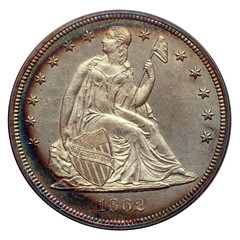 Stephen Petty will be speaking about Seated Coinage of the 19th century which includes 7 series from
the half-dime to the trade dollar. Specifically, the session will focus on the rarity of coins that have
received a Certified Acceptance Corporation green sticker of grade approval. Stephen was given access
to much of the CAC underlying data and determined the portion of coins with CAC stickers for all seven
series by date and mint mark. These results were published in four articles in the Gobrecht Journal over
the past two years. He will be providing a summary of findings from these papers.
Stephen Petty will be speaking about Seated Coinage of the 19th century which includes 7 series from
the half-dime to the trade dollar. Specifically, the session will focus on the rarity of coins that have
received a Certified Acceptance Corporation green sticker of grade approval. Stephen was given access
to much of the CAC underlying data and determined the portion of coins with CAC stickers for all seven
series by date and mint mark. These results were published in four articles in the Gobrecht Journal over
the past two years. He will be providing a summary of findings from these papers.
Stephen is currently Chairman of the Board of Directors for the Central Ohio Numismatic Association (CONA) in Columbus, OH and Treasurer for the Liberty Seated Collectors’ Club (LSCC). His collecting specialty is Liberty Seated Dollars and Trade Dollars, having completed both sets. When he isn’t working with coins he works as a forensics engineer and an expert witness on exposures to chemicals and other hazards.
Collecting the History of the Hobby in Cincinnati, by David Fanning - 1:00 pm
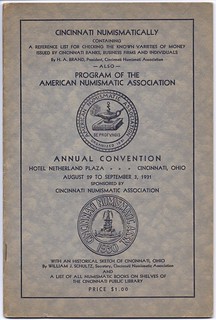 David F. Fanning will present on the history of numismatics with a local Cincinnati flavor. There will be a
display of publications, store cards, convention medals, etc. to complement this presentation of the
numismatic hobby in Cincinnati.
David F. Fanning will present on the history of numismatics with a local Cincinnati flavor. There will be a
display of publications, store cards, convention medals, etc. to complement this presentation of the
numismatic hobby in Cincinnati.
Mr. Fanning is a principal of Kolbe & Fanning Numismatic Booksellers, an auction and retail firm located in the Columbus, Ohio area. A student of numismatic literature since childhood, he holds a Ph.D. in English from the Ohio State University and is a Life Member of the American Numismatic Association. He is an elected Fellow of the American Numismatic Society and has been named to the honorary Rittenhouse Society as well as to the Attinelli Fellowship. Mr. Fanning is the author of Ancient Coins in Early American Auctions and has published numerous articles on numismatic literature, North American coins and medals, medieval and modern foreign coins, and other topics.
The Warrington Faker, by Joseph Boling - 2:00 pm
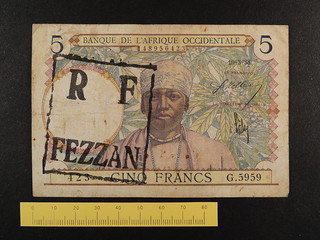 An eBay seller from the English midlands has been offering fraudulently altered paper money for over
ten years. This presentation will show examples of his work and methods of identifying it when you
encounter it in the market place being re-offered by his victims.
An eBay seller from the English midlands has been offering fraudulently altered paper money for over
ten years. This presentation will show examples of his work and methods of identifying it when you
encounter it in the market place being re-offered by his victims.
Joseph Boling is a half-century collector of paper money of all stripes. He presently concentrates on counterfeit and altered notes. He has taught at ANA’s Summer Seminar for twenty years and has delivered scores of presentations to clubs around the country.
BOURSE CONTACT: DAVID HEINRICH CINCYCOINS@GMAIL.COM
VOCABULARY TERM: ELECTROTYPE
Here's another entry from Dick Johnson's Encyclopedia of Coin and Medal Terminology. -Editor
Electrotype. A medallic or numismatic item made by electrolysis; a galvano or electroform. An electrotype requires a mold or pattern, which must be negative to produce a positive item. It creates a shell of one side of a coin, medal or plaquette; two shells are required to make a two- sided item. To give the item a solid feel it can be filled with metal, usually lead, called a drop-in. By bringing two sides together it creates a seam around the edge, which is diagnostic of most electrotypes. The metal required of electrolysis must conduct an electric current, thus metals normally used for coins – copper, silver, gold – are also excellent to use in electroforming. While such pieces were formerly called electro in the numismatic field, the full term is used today.
Status of electrotypes. There are two areas of electrotype manufacture, one of which may be considered of questionable status. No one would dispute the making of electrotypes from new models and patterns as works of original art. The questionable area is replicating existing coins and medals. By using a coin or medal as a pattern, a mold may be taken of it, and this mold used as the pattern for an electrotype. Collectors consider this a "counterfeit" and would shun it.
Technically, however, an electrotype made from a coin or medal is a custom copy. Several museums have offered this as a service for replicating specimens in their collections. (The British Museum did this for a nearly forty years, see history below.) Thus knowledgeable numismatists recognize electrotypes as either original works of art or replicas for legitimate research or study.
How electrolysis is used to make an electrotype. The mold or pattern for an electrotype must be negative to make a positive electrotype. (Thus a mold is made from the coin or medal to be replicated.) The mold may be any material – metal, plaster, epoxy or other material. It is then coated with bronze powders or graphite to make it electrically conductive; the powders also act as a release agent when the mold and electroformed cast are separated.
The coated pattern is wired, to carry the current to an overhead bar (called a bus bar). The wired pattern is suspended in an electrolyte solution in a tank. The mold is the cathode, and the source of the metal to from the item is the anode. The current is furnished from a rectifier (which converts alternating current to direct current and supplies the electric current in very low voltage).
The current is turned on and electrodeposition begins. Molecules of metal (actually ions) from the anode pass instantly into the electrolyte solution; existing ions of medal already in the electrolyte then deposit on the cathode. A thin shell is formed and the longer the pattern is left in the tank with the current on, the thicker the shell becomes.
The pattern – with the newly made electroformed shell still attached – is removed from the tank and the two are separated (easily pried apart if there are no undercuts). Two shells are electrically cast separate to make a two-sided piece. This is usually in the same tank at the same time so the two pieces will have the same composition.
The shells are roughly trimmed to size, and the shell with the greatest cavity (usually the obverse) is laid flat. A drop-in of molten lead is poured into the shell and while still molten the opposite shell is placed over it in position (the axis of the obverse must match the axis of the reverse). After the lead solidifies, and the piece can be handled, the edge is burnished to even out it's surface.
If it is a copper electrotype, it is bright red all during this stage. It must be given a patina to protect and color its surface. A silver electrotype is generally highlighted. Gold electrotypes are customarily left intact (since the gold finish is stable).
History of electrotypes. The first electrotypes were made with primitive batteries in both Europe and America in 1840. Within a decade small glyptic objects including coins and medals were being replicated. By 1859 in New York City Samuel H. Black had advanced his techniques to produce plaques up to two feet square and had created his Declaration of Independence Plaque with five American medals replicated on it. (See illustration.)
In England the British Museum was electrolytically casting copies of coins in their collections for sale to the public. Robert Cooper Ready, an antiquarian, was given permission to replicate by electrotyping any coin, medal, seal or gem in the museum's collections. When he died his estate contained over 22,000 such electrotypes.
Ready's sons, August and Charles, carried on this practice well into the 1880s but by this time to differentiate their casts, they placed the initials R, RR or MB on the edges of their electrotypes. Today many of these Ready electrotypes are rarer than the originals and are in demand by numismatists (but shunned by collectors who see them only as "counterfeits"). See Forrer (5:53-54).
Detecting electrotype copies. Often the seam where the two sides are joined is the most obvious evidence to identify an electrotype. Other diagnostic evidence is the difference in weight between the original and the electrotype (the original being heavier). Also the specific gravity will differ. An original is one homogeneous mass, the electrotype is made of copper with a metal filler, usually lead or solder. The surface will be a pure metal – pure copper, pure silver, or in rare instances, pure gold – since an electrotype is usually made with pure anodes (but can be placed in different tanks, or different anodes can be introduced in the tank, for different metal deposits).
Also an electrotype piece will not pass the ring test, with a duller resonance than a struck piece; it will have a lower tone or even a dead thud. However, the edge is the most viable place to notice the difference between a struck piece and an electrotype – the seam should be evident. Some dishonest electrotypers even tried to evade that by machining the two shells so that one had a complete, smooth solid edge, the other have no edge at all, and the seam was at or near the rim/edge juncture. References:
E3 {1902-30} Forrer 5:53-4 (on Robert Ready, electrotyper).
NC6 {1960} Peck, p 90, note 1.
N19 {1998} Bowers, p 110.
To read the complete entry on the Newman Numismatic Portal, see:
Electrotype
(https://nnp.wustl.edu/library/dictionarydetail/515832)
1796 QUARTER EAGLE EX-ELMER SEARS
Last week we mentioned dealer Elmer Sears. Stack’s Bowers Galleries Numismatic Acquisition Coordinator Ron Gillio passed along this upcoming auction lot description for a nice 1796 Quarter Eagle sold by Elmer Sears in 1926. Thanks! -Editor
1796 Capped Bust Right Quarter Eagle. Stars on Obverse. B-3. Rarity-5+. MS-62 (PCGS). This is one of the most significant and exciting offerings in this sale - a fresh Mint State 1796 Stars Obverse quarter eagle that has only recently been certified by PCGS for the first time and is making its debut in the modern numismatic market. It is a poster example of a classic early U.S. Mint gold rarity. Vivid surfaces exhibit deep olive undertones to brighter golden-apricot color, wisps of pale pinkish-rose also evident as the coin rotates under a light. The striking detail is generally bold to sharp from a nicely centered impression, and while isolated high points are a tad soft, many other features are fully rendered and crisp. Semi-reflective in the fields with a satiny texture otherwise, the surfaces are uncommonly free of sizeable marks for both the issue and the assigned grade. Remarkably fresh and original in appearance, quite unlike so many early gold coins encountered in today's market. In sum, this is a lovely coin and outstanding representative of the issue that would serve as a highlight in the finest gold cabinet. BD Die State d.
The Coinage Act of April 2, 1792, authorized the production of three gold denominations at the newly established Mint: the $10 eagle, $5 half eagle, and finally the $2.50 quarter eagle. It would not be until four years later that the first quarter eagles rolled off the presses. This was no grand undertaking in terms of quantities: while 6,196 half eagles and 4,146 eagles were coined in 1796, scarcely 1,395 combined of both varieties of 1796 quarter eagles were delivered. The half eagle turned out to be the most popular of the three denominations for general commerce, while the eagle was useful for large overseas transactions with Europe. The quarter eagle, however, did not prove especially useful in everyday commerce. In the Mint's early days, precious metal coins were made to order by depositors who requested specific denominations, and the quarter eagle's bigger siblings received most of the attention. The denomination was struck only erratically and generally in small numbers in its first dozen years before production was put on hold after 1808.
The first 1796 quarter eagles minted featured an obverse without stars, an unusual choice considering the half eagle and the eagle both had stars as part of their obverse designs. Likely, they were omitted as there were stars on the reverse, although over the years quite a few federal coins have had stars on both sides. (The first $5 and $10 coins of 1795, continuing through 1797, had stars only on the obverse.) At some point in early 1797, a decision was made to add 16 stars (in an 8x8 configuration) to represent each state of the Union at the time and mark the admission of Tennessee in June of that year. This was the first and, as it turns out, the last time the obverse star count on quarter eagles was adjusted each time a state was added.
For the entire 1796-dated quarter eagle issue, three die pairs using two obverses and three reverses were employed. Both obverse dies shared the same master hub and date punches. The three reverse dies all bear 16 stars and were made using the same master hub for the eagle, clouds, and the ribbon inscribed E PLURIBUS UNUM. The reverse hubs are believed to be by John Smith Gardner, and feature an eagle with a longer neck, visible tongue, two rows of tail feathers, and three claws visible on top of the talons clutching the arrows and branch. The later Scot hubs produced after Gardner left the Mint in 1796 have a shorter neck on the eagle, three rows of tail feathers, and a single claw on top of each talon. Only one set of dies -- the BD-3 die marriage -- was required to produce the entire run of 432 Stars on Obverse quarter eagles. Conventional wisdom indicates that they were all coined on January 14, 1797. Some research suggests that this batch may have also included some No Stars quarter eagles as part of the 432-piece mintage, with an additional 98 examples of the BD-3 variety delivered on February 28, 1797.
As with most early U.S. Mint gold issues, a large quantity of 1796 quarter eagles ended up in the bullion speculator's crucibles during the 1820s and 1830s, leaving only handfuls for modern numismatists. The 1796 Stars on Obverse quarter eagle is much rarer than the earlier No Stars variety as a whole; perhaps only a third as many BD-3 pieces as BD-2 No Stars coins are extant (the No Stars BD-1 pairing is of exceptional rarity). At most, 40 to 50 of the Stars on Obverse variety are thought to survive, with maybe little more than a dozen at the Mint State level. Despite this, the status of the No Stars as a one-year design type has helped it capture much of the numismatic spotlight. However, the Stars on Obverse quarter eagle is attracting greater attention as more and more collectors and scholars come to appreciate its rarity.
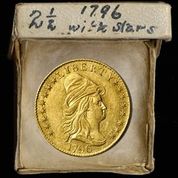 The offered example is solidly in the Mint State category and offers both absolute and condition rarity. Even more significantly, this coin was last offered for sale in the 1970s and, as such, is making its debut in the modern numismatic market. Its earliest known provenance dates to 1926, when the coin was sold by Elmer Sears. A coin dealer in Fall River, Massachusetts, Elmer Snow Sears conducted auctions from 1904 to 1910. He later joined Wayte Raymond in the U.S. Coin Co. in New York and issued a few undated fixed price lists. During that time, in 1914 specifically, he exhibited his early gold coins at the American Numismatic Society (it is interesting to speculate whether or not the present quarter eagle was included in that display).
The offered example is solidly in the Mint State category and offers both absolute and condition rarity. Even more significantly, this coin was last offered for sale in the 1970s and, as such, is making its debut in the modern numismatic market. Its earliest known provenance dates to 1926, when the coin was sold by Elmer Sears. A coin dealer in Fall River, Massachusetts, Elmer Snow Sears conducted auctions from 1904 to 1910. He later joined Wayte Raymond in the U.S. Coin Co. in New York and issued a few undated fixed price lists. During that time, in 1914 specifically, he exhibited his early gold coins at the American Numismatic Society (it is interesting to speculate whether or not the present quarter eagle was included in that display).
Elmer Sears retired in 1918 and sold his dealer stock that same year through a series of B. Max Mehl auctions. (Wayte Raymond continued in business under his own name thereafter.) He was not finished with numismatics yet, however, and seems to have continued operating from time to time as a vest pocket dealer, selling coins from his personal collection and/or handling select high end pieces that came his way. He is known to have offered John Work Garrett a Brasher piece in 1925, and that same year Sears also referenced having met Garrett in Wayte Raymond's office "some year ago or so." The quarter eagle offered here, sold by Sears in August 1926, further confirms his continued activity in numismatic circles well after his retirement in 1918. He died in 1937.
When and under what circumstances Sears acquired this coin are unknown. Was it set aside from his dealer stock as a personal favorite? Did it cross Sears' path after his retirement and provided the opportunity for him to make a special numismatic sale? Or maybe Sears acquired the coin with the specific intention of including it in his personal collection. We will never know. Also lost to history is the identity of the numismatist who acquired this coin from Sears in 1926, although he/she is probably the person who recorded the transaction on the small 30.5 mm x 30.5 mm cardboard box that accompanies this lot. Likely the box in which this coin was housed for decades, on one edge of the lid is written in black ink "2 1/2 1796 / WITH STARS," while on the bottom is written "1796 2. EAGLE / WITH STARS OBV. / UNC. 'GEM.' / FROM SEARS. / AUG 1926. / @ 350.00."
The trail goes cold after the Sears sale, the coin next surfacing in the hands of Montrose, California dealer Herman Engelhardt, who sold it to a doctor at an unknown time. By the 1970s at the latest the doctor was living in La Canada, California, at which time he sold the coin to our consignor. Off the market for upward of 50 years, this coin was recently certified for the first time by PCGS in anticipation of its offering in this sale. We expect spirited bidding when this beautiful and highly significant example of a classic early gold rarity crosses the auction block.
PCGS# 7647. NGC ID: BFVN.
PCGS Population: 2; 3 finer (MS-65 finest).
Ex Elmer Sears, sold in August 1926; unknown; Montrose, California dealer Herman Engelhardt, sold to the following, date unknown; a doctor in La Canada, California, sold to our consignor in the 1970s and off the market since that time.
To read the earlier E-Sylum article, see:
1921 BOSTON ANA PHOTO INCLUDES ELMER SEARS
(https://www.coinbooks.org/v24/esylum_v24n24a13.html)
ELMER SNOW SEARS (1874-1937)
Pete Smith recently updated his American Numismatic Biographies entry for Elmer Sears. Thanks. -Editor
Sears, Elmer Snow Dealer, Collector (b. 3/13/1874 d. 9/23/1937)
Born in Fall River, Massachusetts, son of Isaiah F. Sears and Sarah A. Little. Married to Mima Carr Gray on September 11, 1905. They had one child.
Dealer in Fall River, Massachusetts. Sears conducted three auctions during 1904 to 1910 and issued a few undated fixed price lists. He later joined Wayte Raymond in the United States Coin Company. They conducted 43 auction sales during 1912 to 1918. In 1914 he exhibited early gold coins at the ANS. In 1918 he retired and Raymond began to conduct business under his own name. Sears placed his stock with B. Max Mehl for auction.
He was a 32nd degree Mason. He died at home in Swansea, Massachusetts and is buried at Christ Church Cemetery in Swansea, Massachusetts.
The findagrave site shows his year of death as 1957. This is an obvious error. The headstone shows 1937.
ERWIN G. WARD (1849-1920)
Here's another entry from the online draft of John Lupia's book of numismatic biographies. Thanks! This is an excerpt with the full article and bibliography available online. This week's subject is Massachusetts collector and early ANA member Erwin G. Ward. -Editor
Erwin G. Ward (1849-1920), Palmer, Massachusetts; Superintendent, Hampden Truant School, Springfield, Massachusetts. Photo on the 33rd leaf verso in Philatelic West, Vol. 35, No. 2, February (1907). Later moved to 398 Pleasant Street, South Weymouth, Massachusetts.
He was born in 1849 in Massachusetts. In his youth he lived on a farm and became a bird egg collector. Later on he began collecting foreign coins. Later on still he began collecting CSA paper money using Dr. George Massamore’s catalogue for a guide. He also amassed an Indian relic collection of artifacts from every state.
In 1892 he advertised to purchase issues of Coin Collector’s Journal lacking in his collection and to trade Indian arrow-heads from Ohio for those found in other states. He began collecting stamps in 1896. And became a member of the American Philatelic Association.
He applied for membership to the ANA in 1892 and is member no. 66.
He collected Egyptian coins wanting to know how to distinguish a piece of Abdul Medjid from that of Abdul Aziz. He is listed as ANA dues paid in 1897.
To read the complete article, see:
WARD, ERWIN G.
(http://www.numismaticmall.com/numismaticmall-com/ward-erwin-g)
HARVEY STACK'S NUMISMATIC FAMILY, PART 98
The latest article in Harvey Stack's blog series continues with the year 1985, including the Sherwood Boyd sale. Check out the World Trade Center towers on the cover. -Editor
The fact that 1985 was 50th anniversary year of presenting public auctions attracted consignments, and we started in January with the vast collection from the Estate of Joseph Bellini. Joseph was a wonderful collector and a friend to all who loved numismatics as he did. He had built a comprehensive collection of 20th century coins from small cents to silver dollars, mostly in choice and gem Mint State. He had a selection of minor Proof sets (as sold by the Mint) from 1878 to 1900. He also built a complete set of gold dollars, along with a large group of other gold coins from quarter eagles to $20 gold. It was a great way to start our anniversary year.?
March 1985 brought a sale of rare and unusual United States gold coins consigned by a group of local collectors that included Harold Bareford, James Reed, Donald Hopkins, and Joseph Bellini, all of whom wanted Stack’s to be able to sell important coins during this year. This catalog of 1,192 lots was highlighted by rare early gold coins of all types starting with 1795, as well as scarce and rare dates and mints of all denominations. An offering of territorial gold featured two octagonal $50 pieces, along with a Wass, Molitor and Co. round $50.?
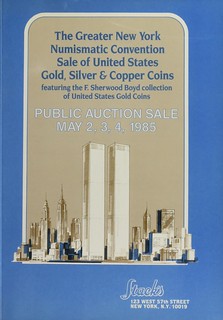 In May 1985, Stack’s once again held our annual sale in conjunction with the Greater Metropolitan New York Numismatic Convention, a major event hosted by nine clubs in the New York City area. This three-session sale brought 1,815 lots to the auction block, with the first two sessions offering a comprehensive selection of all series from Colonials to silver dollars with numerous Mint State and Proof examples, The third session featured the Sherwood Boyd Collection of U.S. Gold Coins. Sherwood Boyd was the nephew of the renowned collector and dealer F.C.C. Boyd, prominent in the 1930s to the 1950s. F.C.C. Boyd had one of the foremost collections (and hoards) in the metropolitan area, and he traded, bought and sold with many of the important dealers at the time. He was instrumental in helping his nephew Sherwood build a noteworthy collection. Sherwood was fortunate to have a family member teach him about numismatics and quality coins.
In May 1985, Stack’s once again held our annual sale in conjunction with the Greater Metropolitan New York Numismatic Convention, a major event hosted by nine clubs in the New York City area. This three-session sale brought 1,815 lots to the auction block, with the first two sessions offering a comprehensive selection of all series from Colonials to silver dollars with numerous Mint State and Proof examples, The third session featured the Sherwood Boyd Collection of U.S. Gold Coins. Sherwood Boyd was the nephew of the renowned collector and dealer F.C.C. Boyd, prominent in the 1930s to the 1950s. F.C.C. Boyd had one of the foremost collections (and hoards) in the metropolitan area, and he traded, bought and sold with many of the important dealers at the time. He was instrumental in helping his nephew Sherwood build a noteworthy collection. Sherwood was fortunate to have a family member teach him about numismatics and quality coins.
The Sherwood Boyd Collection featured a full set of gold dollars, an extensive run of $2.50 gold, starting with both varieties of 1796, an almost full set of $3 gold pieces, both varieties of $4 (1879 Flowing Hair and Coiled Hair) and an extensive run of half eagles from 1795 to 1929. He also had an almost complete date and variety set of $10 eagles from 1795 to 1804, and then through to the 1930-S, a great offering of double eagles, including rare mintmarks. and an impressive collection of territorial specimens. These three sessions made a perfect something for everyone
convention offering.
The Stack’s June 1985 sale was an offering of popular and rare coins from the U.S. half cent to the $50 gold, offering many possibilities among its 921 lots for those who needed dates and mint marks to fill openings in their collections. Of course, mid summer brought about an annual event that had become very popular across the hobby since its inception in 1979, as in July we participated in the Apostrophe Auction,
this time called, of course, Auction ’85. The sale included silver and gold coins, Gem Proofs and Mint State pieces, as well as sets of coins, highlighted by early date Proof sets from 1858 to 1915. It was a spectacular offering and attracted large attendance for each session, as well as thousands of bid sheets. It proved once again to be a successful venture for Stack’s and the other participating companies.?
To read the complete article, see:
Harvey Stack Remembers: Growing Up in a Numismatic Family, Part 98
(http://www.stacksbowers.com/News/Pages/Blogs.aspx?ArticleID=harvey-stack-remembers-part-98-stacks-bowers-galleries)
To read the earlier E-Sylum article, see:
HARVEY STACK'S NUMISMATIC FAMILY, PART 97
(https://www.coinbooks.org/v24/esylum_v24n23a13.html)
W.L. ORMSBY, PART ONE
Susan Bremer of Heritage published the first of a series of articles about engraver, author and publisher W.L. Ormsby. It appeared in the June 18, 2021 issue of the Heritage Currency News email. -Editor
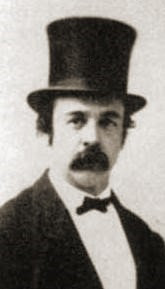 Engraving, inventing, and writing are just a few of the endeavors that W.L. Ormsby has been known for. A complex man, whom some have observed had his head more in the clouds than his feet on the ground. He is one of the most famous and infamous names in banknote engraving. W. L Ormsby was and still is a conundrum of a man.
Engraving, inventing, and writing are just a few of the endeavors that W.L. Ormsby has been known for. A complex man, whom some have observed had his head more in the clouds than his feet on the ground. He is one of the most famous and infamous names in banknote engraving. W. L Ormsby was and still is a conundrum of a man.
W. L. Ormsby was born September 9, 1809 in Hampton, Connecticut. Little is known about his early years, other than that he was apprenticed to an engraver in 1825. In 1829, he went to New York to hone his skills at the National Academy of Design. In the several years after graduation, he and his family moved to Albany and Rochester, New York where he engraved under his own name. Later he moved to Lancaster, Pennsylvania, where Ormsby went to work for Carter, Andrews & Co.
By 1840, Ormsby and his family had returned to New York where he continued to engrave banknotes and to create plate engravings for the Columbian Magazine. Around this time, several important things happen in his life; he divorced his wife and bought the controlling shares in Columbia Magazine. He received high praise in the engraving community at this time and began writing pamphlets about the engraving of the banknotes. The first, published in 1852, was A Description of the Present System of Banknote Engraving, which offered intricate borders and other design elements that could be introduced for greater anti-counterfeiting measures. Ormsby was hopeful that he would be able to present his work to President Pierce. Unfortunately, this was not to be. He published another book on anti-counterfeiting with a more colorful title, Cycloidal Configurations, or the Harvest of Counterfeiters, in 1862.
Although Ormsby was a strong proponent of anti-counterfeiting, it would not save him from being accused of the very thing. Although never either convicted or vindicated in court, Ormsby spent tremendous amounts of money fighting the accusation. Although Ormsby suffered numerous setbacks such as the counterfeiting court case and the failure of Columbia Magazine, he continued to press forward, and in 1863 was one of the founders of the Continental Bank Note Co. Possibly due to the accusations of counterfeiting and his loose business practices, Ormsby's role as one of the founders of the CBNCo. was kept hidden until after his death in November, 1883.
With many twists and turns, the story of W. L. Ormsby is one that is attention-grabbing. Having a definite opinion of the man becomes more difficult as historians move deeper into the details of his story. Was he a counterfeiter, despite publishing anti-counterfeiting books? Or was he simply misguided and misled? Whatever the answer, in next month's Engraver Spotlight article, we will continue to explore Ormsby's life, specifically, several of his unique and important inventions that enhanced the banknote and printing industries.
MAXWELL E. BRAIL (1910-1992)
Last week Craig Whitford introduced us to the Max Brail Canadian medal collection being offered by Marc Verret & Eric Paquet at The Canadian Numismatic Company. The pair kindly forwarded the below photo and bio of Max from the catalog. They've also placed an ad in this issue with more highlights from the sale. Be sure to click on it or follow the link below to see more great lots on offer. -Editor
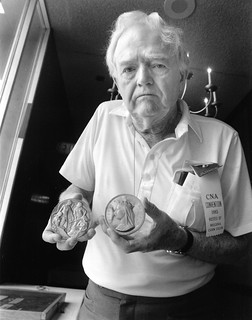 Maxwell E. Brail, 1910-1992 Mr. Max Brail, a lifetime collector with a keen passion and enthusiasm for his collecting, often demonstrated through his openness in sharing his achievements and knowledge through his many presentations, exhibitions and writings at various exhibitions and local shows. He began his life in 1910 in a small Michigan town known as Greenville. As a young man he located to Jackson, Michigan and worked in the dry-cleaning business as a driver and salesman. In a few short years he would own his own dry-cleaning operation. In 1937 he married Lucille and she would accompany him on most of his numismatic journeys throughout their lifetime. With his success in business, he built and leased a McDonald’s in Jackson.
Maxwell E. Brail, 1910-1992 Mr. Max Brail, a lifetime collector with a keen passion and enthusiasm for his collecting, often demonstrated through his openness in sharing his achievements and knowledge through his many presentations, exhibitions and writings at various exhibitions and local shows. He began his life in 1910 in a small Michigan town known as Greenville. As a young man he located to Jackson, Michigan and worked in the dry-cleaning business as a driver and salesman. In a few short years he would own his own dry-cleaning operation. In 1937 he married Lucille and she would accompany him on most of his numismatic journeys throughout their lifetime. With his success in business, he built and leased a McDonald’s in Jackson.
In the late 1920s he began actively collecting United States coins purchasing items he desired from the Chapman Brothers, B. Max Mehl, Albert Grinnell and other well-known dealers, and auction houses as well as U.S. commemoratives directly from the issuing authorities. During this time his primary collecting interest was United States coinage and Michigan National Bank Notes.
During 1944, at the age of 34, Max became life member No. 92 in the American Numismatic Association; twenty-three years later he would be given the same life membership number in the Canadian Numismatic Association. Throughout the decades he would serve on the boards of numerous regional, state and local clubs and organizations.
His interests would shift throughout his collecting adventure. In the 1960’s, with his income from McDonald’s, he went about acquiring all of the Proof and Specimen notes in perfect condition from the chartered banks of Canada that he could locate. Max always sought out the best condition and rarity when acquiring items for his collection. By 1976 he had amassed a collection of more than 500 examples of Canadian currency, many with very low serial numbers. During 1977, the Canadian Imperial Bank of Commerce would acquire the collection intact for their museum.
Canada was among Max’s primary interests in collecting. He loved Canada and all of the numismatic items relating to our northern neighbor. The sale of his currency collection would allow him to explore new avenues including medals – gold medals, life-saving medals, military decorations, and more. But acquisition was only part of the story. With each new acquisition he would do a deep dive into its history – a regular numismatic sleuth. He wasn’t satisfied until he knew everything there was to know about the medal; from its designer to the individual, it was given to. (Today we have internet access for research – where Max utilized pen and paper in his correspondence consisting of hundreds upon hundreds of handwritten letters both nationally and internationally.) With this knowledge Max made the medal come alive in his personal encounters with other collectors.
His greatest joy in collecting was achieved when he could put all of the pieces together to share through presentations and the exhibits that he created. At nearly every convention he attended you could find Max, (with Lucille close by), in the exhibit area, sharing his knowledge and love of numismatics with both young and old alike. Max exhibited competitively through the early to mid-1960’s and said to his family I’ve won everything I ever wanted to win.
He decided to give the younger exhibitors a chance. Later in life he exhibited on an invitational basis.
A man of honor and prestige, he loved life and his family; he enjoyed cars; motorcycles; flying (he owned several planes through the years); photography; owned a one-room schoolhouse; served as Jackson’s historian; secured recognition for Michigan’s Civil War governor Austin Blair; as well as the birthplace of the Republican party in Jackson.
In 1960 he was appointed to the U.S. Assay Commission under President Eisenhower. Max spent decades forming one of the finest collections of U.S. Assay Commission medals ever assembled outside the U.S. Mint. He loved history, writing, learning and acquired lasting friendships throughout his lifetime.
Max was laid to rest in 1992. It is the family’s hope as well as mine, that through this offering of the remaining portion of his Canadian collection, that these medallic pieces of history will find new homes and that their story and his will live on. All of the above information courtesy of the Brail Family and Craig Whitford.
[PHOTO] Max at the 1985 C.N.A. Convention in Regina holding the pair of gold Canadian Confederation Centennial medals from 1967 offered in this sale. The medals are set number 12 of 25 issued. [Photo courtesy of The Leader Post, Regina, Sask., 1985]
For more information, see:
https://www.canadiancoinsandpapermoney.com/
To read the earlier E-Sylum article, see:
THE MAX BRAIL CANADIAN MEDAL COLLECTION
(https://www.coinbooks.org/v24/esylum_v24n24a19.html)
MORE COLTRANE COLLECTION PART 2 SELECTIONS
Bruce Hagen and Maureen Levine cataloged the Mike Coltrane Collection Part 2 for Heritage, with assistance from Bob Moon and Frank Clark. They submitted this additional selection of highlights. Thanks! -Editor
The Mike Coltrane Collection Part 2 Sale
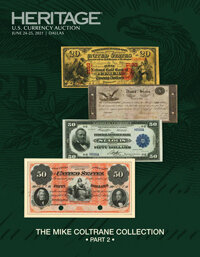 There are many artistic and historical American and related currency notes cataloged in The Mike Coltrane Collection Part 2 sale. This cabinet was formed over the past several decades with diligence, acumen, and an appreciation of the inter-relationships of the notes contained. The majority offered in the sale were obtained long ago, prior to the establishment of grading services, and are certified for the first time. They will be sold unreserved by Heritage Auctions on June 24-25, 2021.
There are many artistic and historical American and related currency notes cataloged in The Mike Coltrane Collection Part 2 sale. This cabinet was formed over the past several decades with diligence, acumen, and an appreciation of the inter-relationships of the notes contained. The majority offered in the sale were obtained long ago, prior to the establishment of grading services, and are certified for the first time. They will be sold unreserved by Heritage Auctions on June 24-25, 2021.
Several areas are the most significant ever cataloged, particularly the War of 1812 Treasury Notes and large size Federal Reserve Bank Notes. Other very collectible areas are also featured such as United States Fractional Currency, Small Size Currency, and Philippine Islands notes emitted while a United States territory following the Spanish American War.
Collectors will find an extensive selection to bid upon whether seeking a popular large size type note, a rare Small Size currency variety, or an affordable collection lot of stock certificates.
Some highlights include:
United States - Act of February 24, 1815 $50 Treasury Note. Hessler X83E, Fr. TN-11p. Proof. PMG Gem Uncirculated 65 EPQ – A Gem War of 1812 $50 proof with an iconic eagle vignette. It is tied for finest known with the Coltrane Collection proof sold in 2020. This remarkable example is offered singly for the first time. Lot 20016.
To read the complete lot description, see:
https://currency.ha.com/itm/war-of-1812/united-states-act-of-february-24-1815-50-treasury-
note-hessler-x83e-fr-tn-11p-proof-pmg-gem-uncirculated-65-epq/a/3583-
20016.s?ic4=GalleryView-ShortDescription-071515
Fr. 262 $5 1886 Silver Certificate PCGS Superb Gem New 67PPQ. – One of the most famous United States currency types, this stunning Silver Dollar
back note is tied for finest graded with none certified higher. Lot 20097.
To read the complete lot description, see:
https://currency.ha.com/itm/silver-certificates/fr-262-5-1886-silver-certificate-pcgs-superb-gem-new-67ppq/a/3583-20097.s?ic4=GalleryView-ShortDescription-071515
J. P. Morgan "High Society" Presentation Grouping with National Bank of Commerce $20 Note and 1898-S $20 Double Eagle. PMG and NGC Graded and Encapsulated. – A fascinating numismatic assemblage with its original documentation and provenance from well over a century ago. A unique offering for the numismatist or financial historian. Lot 20212.
To read the complete lot description, see:
https://currency.ha.com/itm/miscellaneous/j-p-morgan-high-society-presentation-grouping-
with-national-bank-of-commerce-20-note-and-1898-s-20-double-eagle-pmg-and/a/3583-20212.s?ic4=GalleryView-ShortDescription-071515
Fr. 1330 50¢ Third Issue Spinner PCGS Apparent Choice About New 58. – This classic Fractional Currency rarity is featured in Friday’s Session 2 (lots 23001-23756). These were mostly given away as favors, but were legal tender with these authorized signatures. There are approximately 25-35 known today. Lot 20372.
To read the complete lot description, see:
https://currency.ha.com/itm/fractional-currency/fr-1330-50-third-issue-spinner-pcgs-
apparent-choice-about-new-58/a/3583-20372.s?ic4=GalleryView-Thumbnail-071515
Philippines Bank of the Philippine Islands 5 Pesos 1.1.1912 Pick 7a PMG Choice Uncirculated 64 EPQ. – Many beautifully engraved types were issued for the Philippines under United States sovereignty. This nearly Gem note with its distinctive red back is also featured in Friday’s session 2. Lot 20833.
To read the complete lot description, see:
https://currency.ha.com/itm/world-paper-money/philippines-bank-of-the-philippine-islands-
5-pesos-111912-pick-7a-pmg-choice-uncirculated-64-epq/a/3583-20833.s?ic4=GalleryView-ShortDescription-071515
All lots are currently on Heritage Auctions preview at HA.com/3583. The sale will be held in Dallas with Session 1 (floor) on June 24 and Session 2 (HERITAGELive, Internet, Fax, and Mail only) on June 25. Lot viewing will be available by appointment only at Heritage’s Office in Dallas (June 21-25, 2021); contact Jose Berumen at JBerumen@ha.com or 214-409-1299.
To read the earlier E-Sylum article, see:
COLTRANE COLLECTION PART 2 SELECTIONS
(https://www.coinbooks.org/v24/esylum_v24n23a15.html)
THE BOOK BAZARRE
STEPHEN ALBUM RARE COINS AUCTION 40 RESULTS
Stephen Album Rare Coins has a sale coming up as well, but first, here's a press release with results of last month's Auction 40. -Editor
Strong bidding was seen at Stephen Album Rare Coins’ Auction 40, which was held May 13-15, 2021 at their offices in Santa Rosa, California. The total price realized was $1.56 million (including buyer’s fees) on an estimate of $1.1 million. The sell through rate was more than 96% in the floor sessions. The firm set yet another company record number of internet bidders participating in the sale, and trend which started in 2020 as more coin enthusiasts took to the internet to satisfy their coin buying needs.
A few highlights from the auction follow (prices before buyer’s fees):
LOT 1. ANCIENTS: ATHENS: AR tetradrachm (17.20g), ca. 440-404 BC, S-2526, HGC 4-1597, helmeted bust of Athena right // owl standing right with head facing, AQE before, olive spray and crescent behind, a gorgeous coin displaying masterful die work and fantastic eye appeal, Strike: 5/5, Surface: 5/5, Star designation, NGC graded Mint State*. Estimated at $800 - 1,200. Sold for $2,800.
LOT 606. ISLAMIC: GIRAY KHANS (CRIMEA): Shahin Giray, 1777-1783, AR 60 para (altmishlik, rouble) (22.89g), Baghcha-Saray, AH1191 year 5, A-2111, Ret-157, Sariev-454, 3rd monetary series; standard obverse, toughra reverse, with a floral sprig left & right, each with a flower, lightly cleaned, oblique reeding, lovely VF-EF, RR, ex Dick Nauta Collection, acquired from us in 1986. Estimated at $2,800 - 3,250. Sold for $9,500.
LOT 915. INDIA: MUGHAL: Jahangir, 1605-1628, AR rupee (11.30g), Kashmir, AH102(9) year 15 (1620), KM-150.8, cf. Zeno-145322, zodiac type (Gemini), struck in the month of Khurdad (May 22-June 21); twins embracing, radiate sun in background // jahan faroz gasht ba-kashmir sikkah-i-zar, za naam-i-jahangir shah shah akbar (In Kashmir, the gold coin has become world-illuminating, by the light of the name of Shah Jahangir [the son of] Shah Akbar); edge repaired, PCGS graded VF details. Estimated at $3,000 - 5,000. Sold for $5,500.
LOT 1083. CHINA: QING: Xian Feng, 1851-1861, AE 1000 cash (71.27g), Board of Revenue mint, Peking, H-22.721, 60mm, Prince Qing Hui mint, sun & moon mintmark, cast May-August 1854, brass (huáng tóng) color, a very attractive example! VF, ex Karl Adolphson Collection. Estimated at $500 – 700. Sold for $16,000.
LOT 1362. WORLD: IRAQ: Faisal I, 1921-1933, AR riyal, 1932/AH1350, KM-101, finest known example, proof condition, luxurious golden toning on both sides, from an estimated 20 pieces struck as proofs, NGC graded Proof 66. Estimated at $10,000 - 15,000. Sold for $20,000.
LOT 1800. WORLD: UNITED STATES: AR ingot (158.69g), Opitz p.223 (plate example), 33x50x9mm, issued by the Nevada Silver Co., stamped 999 FINE / 5.09 OZS. / VAL. $6.56 on obverse, with the serial number 266 at the top, slate-gray toning and a touch of rainbow coloring, VF, ex Charles Opitz Collection. Estimated at $750 - 1,000. Sold for $3,500.
LOT 1959. ETHNOGRAPHIC: TAIWAN: jacket money cloth
, Opitz pg. 166-67 (lower plate example), Dubin pg.
237, 89 x 35cm (35" x 13 3/4"), made from more than 30,000 small polished shell and stone beads (by our
conservative estimation) by the Atayal people ca. late 19th century, EF, RRR, ex Charles Opitz Collection. Estimated
at $1,000 - 1,500. Sold for $2,200.
CEO Joseph Lang was pleased with the results. We didn’t have any big ticket items in this auction, but there was a
good variety of nice collector coins, and the majority sold around the high estimate or even higher.
The firm is taking consignments through July 1 for its Auction 41 which will be held on September 16-18, 2021. For more information see www.stevealbum.com.
To read the earlier E-Sylum articles, see:
STEPHEN ALBUM RARE COINS AUCTION 40
(https://www.coinbooks.org/v24/esylum_v24n17a19.html)
MODERN RARE COINS IN ALBUM AUCTION 40
(https://www.coinbooks.org/v24/esylum_v24n18a23.html)
STEPHEN ALBUM JUNE 2021 E-AUCTION 10
Here's the announcement for the June 2021 E-Auction 10 sale from Stephen Album Rare Coins. -Editor
Stephen Album Rare Coins will hold its Internet Auction 10 at its offices in Santa Rosa, California on June 28, 2021. Internet pre-bidding has begun and can be accessed through their website. The Auction is made up of an even 1,000 lots of Ancient, Islamic, Chinese, General World, and Indian Coins. Lot estimates in this auction range from $40 to $1400.
The majority of the coins in the sale are World Coins, with nearly 500 of them graded by PCGS. Over 60 Chinese coins are sure to garner attention, as well as some rare U.S. coins and mint sets.
Sample lots from the sale follow:
LOT 830: WORLD: UNITED STATES: 1947 official mint SET, first year of mint sets, mintage of only 5,000 sets (many now broken up), retail value $1500, set of 28 coins, S. This is the only mint set that contains Walking Liberty half dollars. No S-mint halves were produced this year. Estimated at $1,000 to $1,400.
LOT 104: ISLAMIC: QAJAR: Fath 'Ali Shah, 1797-1834, AV ½ toman (3.07g), Isfahan, AH1212, A-2858, KM-736.1, with mint epithet Dar al-Saltana, lustrous fields! PCGS graded AU55. Estimated at $300 to $700.
LOT 857: CHINA: Republic, AR 50 cents, year 3 (1914), Y-328, L&M-64, small obverse scratch, PCGS graded EF details. Estimated at $500 to $700.
LOT 971: INDIA: BRITISH INDIA: AE rupee token, 1874, KM-Tn2, Prid-32, one rupee grain token struck at the Calcutta mint for the Bengal famine of 1874, with central hole as issued, PCGS graded AU55. Estimated at $400 to $500.
LOT 4: ANCIENT: GREEK: SELEUKEIA: Seleukos I Nikator, 305-281 BC, AE unit (7.41g), Uncertain mint 19 (perhaps Bactra), ca. 290/86-281 BC, SC-269.2, HGC-9:87, head of Dioskouros right, wearing wreathed pilos, encircled monogram behind // forepart of horned horse right, anchor behind, minor porosity, dark red-brown patina, VF, RR. Estimated at $100 to $150.
The firm is now taking consignments for its Auction 41, which will be held September 9-11, 2021. More information can be found on their website at www.stevealbum.com.
ARCHIVES INTERNATIONAL AUCTION 68
Here is the announcement for the June 30, 2021 sale by Archives International Auctions. -Editor
ARCHIVES INTERNATIONAL AUCTIONS OFFERS HISTORIC U.S., CHINESE AND WORLD BANKNOTES FEATURING HUNDREDS OF RARE AND DESIRABLE BANKNOTES ON JUNE 30th , 2021.
The auction will be held by Archives International Auctions at their offices in River Edge, N.J.
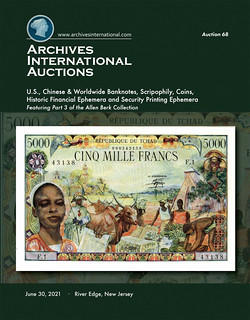 The June 30th, 2021 auction by Archives International Auctions is
highlighted by hundreds of rare and desirable banknotes rarely seen at auction. The Auction 68 catalog will consist of over 750 lots of rare and desirable U.S. & World Banknotes, Scripophily, Coins, Historic Financial Ephemera and Security Printing Ephemera.
The June 30th, 2021 auction by Archives International Auctions is
highlighted by hundreds of rare and desirable banknotes rarely seen at auction. The Auction 68 catalog will consist of over 750 lots of rare and desirable U.S. & World Banknotes, Scripophily, Coins, Historic Financial Ephemera and Security Printing Ephemera.
We are striving to offer our clients and friends items of historical and collecting interest that have been off the market for decades or are new to the collecting world
, stated Dr. Robert Schwartz, President of Archives International Auctions. Included in the upcoming auction is a wide variety of rare, interesting and desirable numismatic and historical objects to enhance the collections of every level of collector and dealer
.
The auction will include hundreds of World Banknotes highlighted by dozens of rare notes from the Allen Berk Collection. One of the many highlights in the auction features a Saudi Arabia, Arabian American Oil Company, ARAMCO
, 1940-1950’s issue Senior Staff Coupon, Ten Points Scrip Note in a PMG graded Very Fine 30 holder. This is the first issued note we have offered from this rare banknote series which is now one of the largest oil companies in the world. French Colonial issues feature the highest graded 1980 Chad, 5000 Francs banknote, P-8 in PMG graded Superb Uncirculated 67 EPQ; 2 exceptional lots of Madagascar notes dated 1960 to 1963, 500 and 1000 Francs are offered that rarely appear at auction; a rare French Antilles, 1963, 50 Nouveaux Francs, P-6a in CU 64 condition is offered as well as two different proofs from the 1941 French Equatorial Africa issues, as well as numerous other French Colonial notes. Also included are hundreds of lots of banknotes with many interesting group lots from an old-time dealer’s stock as well as items from old estate collections and consignments.
The auction begins with Chinese and Asian banknotes including a unique 1941, 10 Yuan, Bank of China Color Trial Proof; a large group of high grade Central Bank of China notes, including 1936 to 1948 issues; an extremely rare and desirable, 1908, Yue Soo Imperial Bank, 5 Silver Dollar Issue, P-S1233b; a rare, French Indo-China, 1951, 5 Piastres, P-75r remainder, rarely seen at auction; 2 different lots of uncut blocks of 4 Specimen-Proofs of 1951 and 1953 Indonesia, Security Bank Note Issues; 2 different 1948 Laos Issara Essay Banknotes by Security Bank Note Company; Algeria is represented by an exceptional Banque De L’Algeria, 1907-1919 issue banknote and the first time we have offered this variety; an early Austria, 1863, Privileged Austrian National Bank rarity is offered; as well as dozens of other exceptional banknotes.
An exceptional group of Russian banknotes are offered with 11 lots offered out of 40 lots in the auction being the highest graded notes for those issues.
The U.S. section begins with 8 lots of desirable Colonial banknotes including 5 different lots of New Jersey, 1776 Colonial notes and a 1780, State of Rhode-Island and Providence Plantations, July 2, 1780, Uncut Sheet of 16 Notes. The Colonial section is followed by 40 lots of Obsolete, Confederate and type notes highlighted by a Republic of Texas, 1839-1841 set from $1 to $500; The Confederate section is highlighted by a set of 4 Erlanger
Cotton Bonds which is followed by U.S. Checks, Drafts and Exchanges and then Historic and Security Printing Ephemera.
The U.S. and World Scripophily session will include over 230 lots of Automobiles, Railroads, Transportation, Banking and Finance, World, and many other desirable topics of Bonds and Shares with many rarities. Highlights of the scripophily section includes a 1797, Third Massachusetts Turnpike, Issued Stock Certificate signed by Caleb Strong, who served as the 6th and 10th Governor of Massachusetts; a 1910 spectacular Michigan Mining certificate from the Copper Crown Mining Company; 2 different Standard Oil Trust certificates dated 1882 and signed by J.D. Rockefeller; Railroad Bonds and Shares are highlighted by a unique California, 1881, Santa Rosa and Sonoma Central Rail Road Company $1000 Specimen bond; and dozens of additional bonds and shares from different topics.
Previews will be limited and by appointment only and we will be observing strict safety precautions including the wearing of masks and observing social distancing to protect our team as well as our guests. We will do our best to accommodate anyone who desires additional information and photographs. For questions, please call 201-944-4800 or email info@archivesinternational.com .
The online catalog for the Wednesday, June 30th , 2021 auction is on Archives International Auctions’ website and can be viewed via the Archives International live bidding platform. It can also be viewed as a Virtual Catalog or downloadable Sale 68.pdf on their website. To pre-register for Live Internet Bidding, log on to the Archives International Auctions website, at www.ArchivesInternational.com .
Archives International is now working on their Summer and Fall 2021 auctions and are seeking quality consignments for future auctions or outright purchase including U.S. and worldwide banknotes, coins, stocks, bonds, stamps, postal history, historic ephemera, and autographs. To sell or consign one piece or an entire collection, please call AIA at (201) 944-4800; or e-mail them at info@archivesinternational.com
You may also write to Archives International Auctions, at 1060 Main Street, River Edge, NJ 07661, U.S.A. To learn more about Archives International Auctions and the auctions planned for June 30th, 2021, log on to www.ArchivesInternational.com .
DAVISSON'S E-AUCTION 40
Allan Davisson wrote this overview of his firm's upcoming E-Auction. I selected some lot images for illustration. -Editor
E-Auction 40, closing Wednesday, July 21st 2021, is online now! Print copies will be sent next week, if you are not on our mailing list and would like a copy please let us know.
Coins can take us to many different places—some unusual, some historic, some long-gone. This summer catalog has several numismatic vistas we have not offered any, or at least much of, before.
The California Pioneer Fractional Gold coinage came about for the same reason the ancient Greeks began to coin electrum—money was needed for exchange and it was easier to reckon with if someone had assayed and weighed it into a consistent reliable denomination. These early issues were privately made and were apparently honestly-enough made that they became part of the frontier currency.
American currency in a paper form began with notes issued by the various colonies. During the May 10, 1775 session of the Continental Congress the first federally issued paper money was authorized. This authorization was given in eleven different Continental Congress sessions ending with the issue of January 14, 1779. There were many counterfeits but every piece offered here has been certified.
Another part of American history is our country’s role in the Philippines. The only United States branch mint established outside of the continental United States was a mint in Manila that produced coins from 1920 to 1922 and 1925 to 1941. A choice group of Philippine coins anchors the world section of this sale.
Ancient material: Coinage of ancient Spain, the Iberian Peninsula, differs from the more refined issues of the Greeks and Romans. It is a crude coinage in many respects but it has charm. There is a blockiness about it that distinguishes it just as the arcs and curves in Celtic coinage typify their interpretation. Our offering is particularly nice for the series.
Tiny coins represent a collecting challenge. They were small change
that could be readily lost. Historically, collectors serious enough that their collections have become cornerstones of numismatic achievement do not seem to have spent much of their effort on tiny pieces. Yet, the die makers took them seriously. The complexity and style on many of these tiny pieces is phenomenal even if it may take a very close look to appreciate it. And they tend to be affordable. We have a nice run of high-quality pieces in this catalog.
There’s more—a bit of gold, a few exceptional Greek and Roman pieces–some with lovely patinas (we don’t save everything superb for our big annual sale), a bit of choice hammered and milled English, more high quality tokens from the Sussman collection, fascinating world coins including three remarkable pieces from the Central American Republic/Union (two related 19th century alignments), and a few interesting U.S. half dollars.
This summer arrived tumultuously in many places but as I write this it seems June may be settling down, edging toward Robert Lowell’s vision– What is so rare as a day in June. Then, if ever, come perfect days.
Whatever the weather has brought you thus far, I hope you enjoy perfect days
ahead.
For more information, see:
https://davcoin.com/
NUMISMATIC NUGGETS: JUNE 20, 2021
Here's a selection of interesting or unusual items I came across in the marketplace this week. Tell us what you think of some of these. -Editor
Louisiana (New France)- Banque Royale July 1, 1720 10 Livres Tournois PMG About Uncirculated 55.
This note was printed in France and issued by the Bank Royale in New Orleans. The embossed seal of the Banque Royale is at center. These notes were part of the famed "Mississippi Bubble" debacle involving Scottish financier/schemer John Law and land in New France. PMG mentions some pinholes.
From the Colonial Valley Collection, Part II
From the upcoming June 27 Heritage sale. -Editor
To read the complete lot description, see:
Louisiana (New France)- Banque Royale July 1, 1720 10 Livres Tournois PMG About Uncirculated 55.. ...
(https://currency.ha.com/itm/colonial-notes/georgia/louisiana-new-france-banque-royale-july-1-1720-10-livres-tournois-pmg-about-uncirculated-55/a/62187-96181.s)
Ernst August Constantin, 1748-1758, bis 1756 unter Vormundschaft Friedrichs III. von Gotha.
A nice gold coin from the upcoming Künker sale. -Editor
To read the complete lot description, see:
Ernst August Constantin, 1748-1758, bis 1756 unter Vormundschaft Fr
(https://www.kuenker.de/en/auktionen/stueck/293998)
Lovely and RARE older GOLD colonial circulation type coin from Colombia in scarce EXTREMELY FINE condition.
Another nice gold coin. From the upcoming sale from The CoinHouse in Belgium. -Editor
To read the complete lot description, see:
Colombia, Spanish Colony, Ferdinand VII, 8 Escudos Gold 1812 P JF, Uniformed bust right, KM 66.2, XF ! (*)
(https://www.thecoinhouse-auctions.eu/auctions/auction-21-2627062021/299/)
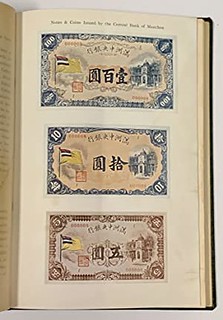 Title: The CENTRAL BANK Of MANCHOU And APPENDIX Of ...
Title: The CENTRAL BANK Of MANCHOU And APPENDIX Of ...
Publisher: Published by the Central Bank of Manchou, Hsinking, Manchoukuo
Publication Date: 1935
[2], ii, 89, [3]; 21, [1] pp. 2 errata slips affixed to final leaf. With 5 inserted plates depicting coins, paper money & the bank building itself. Tissue guards with printed captions. 8vo. 9-3/8" x 6-1/2" Financial information and banking regulation in the Japanese puppet state of Manchukuo, formed in 1932. Slight bow to boards, textblock with mild vertical crease from being folded while in original wrappers. Very Good Plus. Later green leatherette binding with portion of original label to spine.
Interesting book, perhaps of interest to the banknote collectors among us. -Editor
To read the complete item description, see:
The CENTRAL BANK Of MANCHOU And APPENDIX Of LAWS PERTAINING THERETO. 1935
(https://www.abebooks.com/servlet/BookDetailsPL?bi=30937446153)
WAYNE'S NUMISMATIC DIARY: JUNE 20, 2021
Tuesday June 15th was the night of my Northern Virginia numismatic social group, Nummis Nova. Jon Radel was our host, and he chose Aracosia, an Afghan restaurant in McLean. Tom Kays was seated at our table when I arrived. We had a large section of the place to ourselves. Soon we were joined by Robert Hoppensteadt, my guest Daryl Haynor, Jon, Dave Schenkman, and Steve Bishop. Julian Leidman and Roger Burdette completed the group shortly afterward.
Books, Books, Books
Daryl had a copy of his book on United States Classic Gold Coins of 1834-1839. He writes:
"An evening of omnivorous eclecticism. The many ways delectable lamb was prepared was topped by a more varied group of accomplished numismatists. I learned about flippen tokens, J.S.G. Boggs, Disney and Tubman dollars, the foibles of James Barclay, and much more. It was an educational jaunt, not to mention delicious. Thank you for the invitation."
These are two great books that every American numismatist should have in their libraries. Daryl's Classic Gold Coins book won the Numismatic Literary Guild's 2020 Book of the Year honor, and I wouldn't be surprised to see Roger's book in the running in 2022 (it arrived too late for the 2021 award submissions).
For more information, or to order, see the earlier E-Sylum articles:
NEW BOOK: U.S. CLASSIC GOLD COINS OF 1834-1839
(https://www.coinbooks.org/v23/esylum_v23n12a02.html)
NEW BOOK: FADS, FAKES & FOIBLES
(https://www.coinbooks.org/v24/esylum_v24n24a02.html)
I brought along a couple books myself. The first was David Lange's 2006 History of the United States Mint and Its Coinage. On a whim I'd purchased it online even though I already have a copy. This copy was available for under $10 but readers had reported recent online sale records in the $40 range for this popular but out-of-print book. I was bringing coals to Newcastle, though - everyone already had a copy as well. I'll find another home for it.
The second book was non-numismatic and was returned to me by Dave Schenkman - I'd lent it to him at last month's meeting, thinking he'd enjoy it. He did. It's from my shelf of numismatic biographies and it's the autobiography of my friend Larry Brilliant. I'd worked for him in the 1980s as he and dealer Joe Lepczyk were attempting to create an online system for coin collectors and dealers. Craig Whitford and I spoke about the effort at a 2021 NNP Symposium event. Before I'd even met him Larry was a world-renowned epidemiologist who led efforts to eradicate smallpox in India, and throughout the COVID-19 pandemic he's been a regular expert guest on cable news. His life story is fascinating, from meeting Dr. Martin Luther King Jr., hanging out with Jerry Garcia and The Grateful Dead at Woodstock, to becoming a lifelong friend of Apple founder Steve Jobs.
To watch The Early Days of Online Numismatics panel session, see:
https://nnp.wustl.edu/library/book/598044
J.S.G Boggs
I also brought along a few items from my collection of art by Money Artist J.S. G. Boggs.
This is a piece Boggs made to celebrate his victory in his U.K. counterfeiting case.
And this is his famous depiction of Harriet Tubman as a young girl on a $100 note.
C.B. Miller's Restaurant Counterstamp
"I’m writing an article about these tokens, which were all stamped using large cents as planchets, and would be interested in hearing from anyone owning an example."
Steve's Beauties
Steve Bishop exhibited a couple nice Civil War tokens and a 1762 overstruck Russian copper. Thanks for the images! The overstruck pieces are always fascinating, as is the famous "Shoot Him on the Spoot" diesinking error.
We'll wrap up this report with thoughts and photos from Tom Kays. Thanks, everyone! -Editor
Adding to what Wayne said about that night Nummis Nova dined at an Afghan restaurant, our numismatic conversations sped along like these whirling dervishes that danced above our table.
Nummis Nova folks from the left include Robert, Daryl (our honored guest from the Fairfax Coin Club), Steve, Roger, Dave, Jon and Julian mid-discussion about weighty matters of coin collecting and pending dessert choices after a sumptuous meal of spicy dumplings and kebobs.
Interesting numismatic items I saw pass by included new books already discussed and a ‘medal’ by Dupre of John Paul Jones from an 1863 die impression, labeled as a plastic impression (circa 1870 – 1910??) which caused a stir about when was the advent of ‘plastic,’ versus gutta percha and even pressed wood fiber that might be a more accurate description, that was obtained from an auction in the United Kingdom. Also seen: a Camp Mead, Maryland
Sales Store Construction Camp
token good for 25 cents in merchandise; a circa 1905 flipper (heads/tails) token
with donkey motif that says Good for lunch or drink if presented by a good looking man,
and Columbia Exchange – M. P. Kressich – Capitol Saloon; a collection of uncirculated Civil War patriotic tokens including 189/399a, 178/267do, 209/414, 79/351a, 231/352a, 630/2, and more by Fuld numbers; an 1873 Swedish medal of Olaus Petri by the eminent 19th century female medalist, Lea Ahlborn, and a wood-handled postage cancellation ink stamp from Ruckersville, Virginia permanently stuck on the date of February 23rd, 1895.
Lastly, a collection of items passed by including an English ‘indenture’ on vellum from 1704, that pays homage to the auspices of Queen Anne, and contemporary medals and coins from her reign. Included were a Scottish crown of Edinburgh after the Act of Union, shillings, and a set of half-crown-size medals by Croker for her accession, Entirely English,
a Vigo Bay Victory medal, and a large victory metal by Lauffer hailing the fall of the French garrison to Queen Anne’s forces in 1709, at the siege of Tournai (a town now in Western Belgium near the French border) during the War of Spanish Succession.
Queen Anne era white medal (Eimer 436) shows a French warship’s mast, crow’s nest, colors and pennants shot off, bobbing in the water, and mortar bombardment of the French defenders at Tournai – July 29, 1709 – issued by Caspar Gottlieb Lauffer of Nurnberg and engraved by Martin Brunner with legends translated: NE PEREAT PERDIT She loses that she may not be lost
and SOLVTA CATENIS INSVRGIT She rises relieved of her chains
– On edge is a quote from the poet Virgil translated as The huge limbs of the kingdom fall in ruin.
Nummis Nova dinner talk does tend to drop down rabbit holes that only the most enthusiastic collector will appreciate, but it is by sharing these many rabbit holes of arcane knowledge that a landscape of rabbit warrens becomes a network of numismatic power our dinner group possesses. We can say with pride, I know a guy who used to collect those [insert item] who can tell you more than you ever wanted to know about them.
It’s not always what you know, but who you know, (and what you know they know) that brings home the bacon when dealing with ‘rare’ collectibles that don’t trade hands very often. No telling what obscure items may turn up or what rabbit holes we’ll fall down at the next Nummis Nova dinner, now that we have abandoned specific themes
for show-and-tells. Go on – bring it!
CAROLINGIAN SILVER COIN HOARD FOUND IN POLAND
Arthur Shippee and Pablo Hoffman passed along this article about a hoard of silver coins that may (or may not...) have been part of a ransom to save the city of Paris. -Editor
A hoard of silver coins minted in the Carolingian Empire about 1,200 years ago has been unearthed in northeastern Poland and may have been part of a historic ransom to save Paris from a Viking invasion.
It's the first time anyone has found so many Carolingian coins in Poland. Only three such coins — of a distinctive style with Latin inscriptions and a central crucifix — have been found in the country before now.
The Carolingian Empire was founded by the Frankish king Charlemagne — Charles the Great — and spanned much of modern France, Germany, Switzerland and northern Italy in the eighth and ninth centuries.
Archaeologists think the newfound coins may have come from the Viking trading town of Truso, which was then located near the Baltic coast about 60 miles (100 kilometers) west of the farmer's field where they were found.
And if the coins did come from Truso, it's possible that they were part of an immense ransom of gold and silver paid by a Carolingian king to prevent invading Vikings from sacking the city of Paris.
"If a larger number of the coins can be attributed to Paris, then yes, it is possible — and some have already been attributed to Paris," said Mateusz Bogucki, an archaeologist and coin expert at the University of Warsaw in Poland. But "it is way too early to give such an interpretation," he told Live Science.
Metal detectorists discovered the first handful of the coin hoard in November 2020, in a field near the town of Biskupiec.
The finders, who had permission from the provincial government for their activities, stopped any further searching and kept the location secret until experts from the nearby Museum of Ostróda could investigate the find.
By March 2021, archaeologist Luke Szczepanski and his team had unearthed a total of 118 coins from the field — 117 of them minted during the reign of the Carolingian emperor Louis the Pious, who ruled from A.D. 814 until 840, and one coin minted during the reign of his son Charles the Bald, who ruled until A.D. 877.
Such coins are extremely rare in Poland, which was well beyond the lands ruled by the Carolingian dynasty. The only three Carolingian coins previously unearthed were found at the archaeological site at Truso, which had been established by Norse traders by the eighth century and was famous for its trade in amber, furs and slaves.
To read the complete article, see:
Hoard of silver coins may have been part of historic ransom to save Paris
(https://www.livescience.com/silver-coin-hoard-poland-historic-ransom.html)
GOLD COINS BELIEVED LOST IN THE BLACK DEATH
Gold coins believed lost in the Black Death era are discussed in this BBC article passed along by Arthur Shippee. Found via The Explorator newsletter. To subscribe to Explorator, send a blank email message to: explorator+subscribe@groups.io. Aidan Work passed thids along as well. -Editor
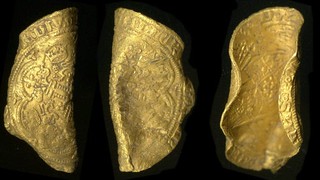 A "very rare" Edward III gold coin lost in the wake of the Black Death has been found by a metal detectorist.
A "very rare" Edward III gold coin lost in the wake of the Black Death has been found by a metal detectorist.
The 23-carat leopard was discovered with another gold coin, called a noble, near Reepham, Norfolk.
Finds liaison officer Helen Geake said the leopard was withdrawn within months of being minted in 1344 and "hardly any have survived".
After the Norman Conquest, the only coins in circulation were silver pennies.
"The royal treasury might talk in terms of pounds, shillings and pence, but the physical reality was sacks of silver pennies," said Dr Geake.
"Then Edward III decided to reintroduce the first gold coins in England since the Anglo-Saxon era - and no-one knows why."
The coins, called a florin, a leopard and a helm, were minted in early 1344, but withdrawn within months.
Dr Geake said: "For some reason they didn't catch on, but when one or two pennies were the equivalent of a day's wages at today's minimum wage rate, perhaps very few people used them."
The Reepham find shows the leopard, which was worth three shillings, was in circulation for much longer than previously thought.
Dr Geake said: "We asked ourselves why and realised the Black Death reached England in 1348.
"It was hugely cataclysmic, a third of the population was dying.
To read the complete article, see:
Gold coins lost in Black Death confusion found in Reepham
(https://www.bbc.com/news/uk-england-norfolk-57520248)
ITALIAN NOBLE FAMILIES ON COINS
Baldwin's have published the second of a series of articles about Italian noble families on coins. Here's an excerpt - see the complete articles online for more. -Editor
In this blog series, we will explore the most famous Italian noble families of the Middle Ages and the Renaissance and their coins. We will look at how did they rose to power, what are their heraldic symbols and some of the coins we have in our collection. In this part, we will be looking at the Medici and Farnese families, which are synonymous with Renaissance power and art patronage.
MEDICI OF FLORENCE
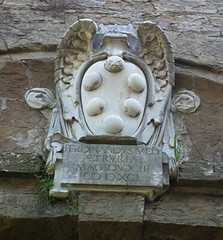 The Medici name is often a synonym for Renaissance in Italy and prolific art patronage. The House of Medici is known as a banking and political dynasty. They first came to prominence with Cosimo de’ Medici in the Republic of Florence during the first half of the 15th century. There are different origin stories of how Medici came to power and where their heraldry is derived from them. The Medici coat of arms has five red balls and one blue on a gold shield. It is prominently displayed on buildings across Tuscany that had been funded by the family. The family gave four Popes to the Catholic Church and were distinguished patrons of Brunelleschi, Botticelli, Leonardo da Vinci, Michelangelo, Raphael, Machiavelli and Galileo, financing the construction of Saint Peter’s Basilica in Rome and the cathedral of Santa Maria del Fiore in Florence.
The Medici name is often a synonym for Renaissance in Italy and prolific art patronage. The House of Medici is known as a banking and political dynasty. They first came to prominence with Cosimo de’ Medici in the Republic of Florence during the first half of the 15th century. There are different origin stories of how Medici came to power and where their heraldry is derived from them. The Medici coat of arms has five red balls and one blue on a gold shield. It is prominently displayed on buildings across Tuscany that had been funded by the family. The family gave four Popes to the Catholic Church and were distinguished patrons of Brunelleschi, Botticelli, Leonardo da Vinci, Michelangelo, Raphael, Machiavelli and Galileo, financing the construction of Saint Peter’s Basilica in Rome and the cathedral of Santa Maria del Fiore in Florence.
A silver Testone of Cosimo III de Medici, minted in Florence, with St. John the Baptist on reverse, the patron saint of Florence.
Cosimo III de Medici was the sixth, penultimate Grand Duke of Tuscany. He had the longest reign in Tuscan history (53 years) and witnessed the economic decline of the family and the region. Upon the death of his son Gian Gastone, Tuscany passed into the hands of House of Lorraine, which was later joined the Habsburg royal family.
A silver Piastra of Cosimo III de Medici, with Christ being baptised by St. John the Baptist on the reverse
To read the complete articles, see:
ITALIAN NOBLE FAMILIES ON COINS – PART 1
(https://www.baldwin.co.uk/news/italian-noble-families-on-coins-part-1/)
ITALIAN NOBLE FAMILIES ON COINS – PART 2
(https://www.baldwin.co.uk/news/italian-noble-families-on-coins-part-2)
THE BOOK BAZARRE
TEACHERS GIVEN PANDEMIC MEMENTO TOKENS
Here in Northern Virginia, our school district gave challenge coins to teachers honoring their service during the pandemic. I can't blame them for preferring cash, thank you very much. -Editor
As the chaotic school year comes to a close, a handful of administrators and nurses were awarded sizable bonuses for working through the pandemic, leaving teachers reeling over their thank you
—a literal token.
Superintendent Scott Ziegler distributed challenge coins to all teachers as a memento for working through one of the most trying times in the district’s history. With an ever-changing distance learning plan, social justice upheaval, and the eventual return to classrooms, teachers confronted unanticipated challenges and uncertainty daily.
In a letter to teachers, Ziegler said the coin symbolizes this year’s work to bridge the gaps, caused by the effects of the pandemic, to educate our students in distance learning, and to transition to hybrid learning. It symbolizes our work rebuilding and reinventing systems to feed our students even when they were learning at home. It represents all of the ways we reinvented our school activities, clubs and sports, so students could continue to participate in a year of uncertainty.
On the coin is an image of the John G. Lewis Memorial Bridge on Featherbed Lane near Lovettsville.
Many teachers were left wondering why they didn’t receive COVID bonuses, as many members of the faculty did.
Had we given given a bonus like Prince William County is considering in addition to the coin, it would have made a meaningful impact,
Corbo said to Ziegler.
It feels like a slap in the face that we were going in and working in the classrooms, and we didn’t get a bonus,
said one county high school teacher.
Carla Wallace, a Loudoun elementary school teacher, said that some of the bonuses were inappropriate, but that the coin was a nice gesture from Ziegler.
To read the complete article, see:
Teachers Given Pandemic Memento Tokens, Administrators Get Bonuses
(https://loudounnow.com/2021/06/16/teachers-given-pandemic-memento-tokens-administrators-get-bonuses/)
At least the teachers can cash in on freebies and discounts from local merchants. -Editor
This weekend, Loudoun County educators can show Dirt Farm their challenge coins and get their first pint for just a penny.
"To have the community like Dirt Farm reach out and say that we appreciate it as well and we recognize your hard work and to have this means a lot," teacher Diane Taylor said.
Plato's Closet Dulles is a buy and sell clothing store that also wanted to help.
"Right now, if you bring in your challenge coin, you get $50 worth of free stuff, no matter what," Carmen Singer said.
Plato's Closet and Dirt Farm have already had several educators take advantage.
The Virginia Alcoholic Beverage Control Authority requires alcohol be sold, so Dirt Farm must charge something. But a member of the community heard about the deal and donated $100 to cover the penny charge. That will cover 10,000 beers. At one per person, that would cover almost every educator in Loudoun County Public Schools.
Dirt Farm’s penny for a pint deal ends Sunday but then Monday through Friday next week the brewery and its other businesses, including Bluemont Winery, are offering more teacher appreciation deals.
Plato’s Closet is running its deal through the end of the summer.
In total, 37 businesses are offering deals, and the list is growing.
To read the complete articles, see:
Businesses Offer Deals to Loudoun County Teachers With Commemorative ‘Challenge Coins'
(https://www.nbcwashington.com/news/coronavirus/coronavirus-in-virginia/businesses-offer-deals-to-loudoun-county-teachers-with-commemorative-challenge-coins/2704751/)
TEACHER DISCOUNTS AND DEALS EXPLODE IN WAKE OF CHALLENGE COIN NEWS
(https://www.theburn.com/2021/06/19/teacher-discounts-and-deals-explode-in-wake-of-challenge-coin-news/)
HERO OF MANIPUR'S VICTORIA CROSS
Here's a press release from Dix Noonan Webb about an important Victoria Cross medal in their upcoming sale. -Editor
The unique and exceptional 1891 ’Capture and Defence of Thobal’ V.C. group of five awarded to 30-year-old Scotsman Lieutenant, later Colonel, C. J. W. Grant of the 12th Regiment (2nd Burma Battalion) Madras Infantry will be offered by Dix Noonan Webb in their live/ online auction of Orders, Decorations, Medals and Militaria on Wednesday, June 23, 2021 on their website www.dnw.co.uk. It is expected to fetch £300,000-400,000.
Charles James William Grant was born in Bourtie, Aberdeenshire in 1861, the son of Lieutenant-General P. C. S. St. J. Grant, and was educated privately and at the Royal Military College, Sandhurst. He was commissioned Lieutenant in the Suffolk Regiment on 10 May 1882, and joined the Madras Staff Corps in 1884. After a long military career, he spent his later years in Sidmouth in Devon, where he died in 1932, aged 71 years.
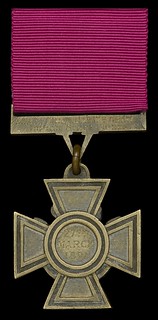 As, Mark Quayle, Associate Director and Medal Expert at Dix Noonan Webb explained:
As, Mark Quayle, Associate Director and Medal Expert at Dix Noonan Webb explained: We
are very excited to be offering this outstanding V.C. group and important archive in our June
sale. The action fought by Lieutenant Grant and his small band of Gurkhas in 1891 on the
North East Frontier of India was a great epic of empire which brought him fame during his
lifetime as the ‘Hero of Manipur’. His storming of the defences at Thobar was remarkable in
itself but it is no exaggeration to say that the subsequent defence of that place for eight days
with just 80 men against an estimated 2000 of the enemy is a feat that probably ranks
alongside Rorke’s Drift in the history of famous defences against overwhelming odds.
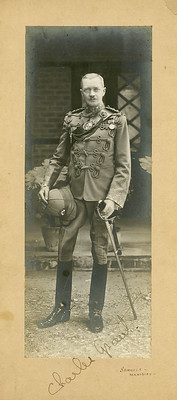 The V.C is to be sold together with a substantial associated archive of historical importance -
items of particular significance including: Grant’s unpublished leather bound ‘Officer’s Field
Note and Sketch Book and Reconnaissance Aide-Memoire’ in which he meticulously records
the march to Manipur and the capture and subsequent defence of Thobal, illustrated by
several detailed sketches of both actions and positions; and a file of original letters, including
the negotiations between Grant and the Manipuris and a coded message from Grant in Greek
characters to the relief force.
The V.C is to be sold together with a substantial associated archive of historical importance -
items of particular significance including: Grant’s unpublished leather bound ‘Officer’s Field
Note and Sketch Book and Reconnaissance Aide-Memoire’ in which he meticulously records
the march to Manipur and the capture and subsequent defence of Thobal, illustrated by
several detailed sketches of both actions and positions; and a file of original letters, including
the negotiations between Grant and the Manipuris and a coded message from Grant in Greek
characters to the relief force.
The Victoria Cross is the highest military decoration, awarded for valour in the face of the enemy. Since its introduction in 1856 there have been 1354 recipients. Charles James William Grant was the 406th recipient.
For more information, see:
https://www.dnw.co.uk/
Here's an article from the recipient's hometown newspaper. -Editor
To read the complete article, see:
Sidmouth's Hero of Manipur's Victoria Cross to be auctioned
(https://www.sidmouthherald.co.uk/news/victoria-cross-auction-8041548)
THE BANK OF ENGLAND’S NEW £50 BANKNOTE
The Telegraph published a nice interview with Sarah John of the Bank of England about their new £50 banknote. Here's a excerpt - see the complete article online. -Editor
You could be fooled into thinking cash is dying. Thousands of shops and restaurants have shunned physical currency in the last year, citing Covid safety concerns.
But the numbers tell a different story: the value of banknotes in circulation has risen by 10pc since the pandemic began. One woman who believes cash has a long life ahead of it is Sarah John, the Bank of England’s chief cashier. Ms John’s job encompasses everything from the design and production of notes, to the destruction of used money at the end of its life.
She said the death of cash had been greatly overstated. Many city-dwelling card users had failed to realise how many ordinary people relied on or preferred cash. Payment preferences are changing and that has been accelerated during the pandemic,
she said. But even today, after the last year, one in every five people still say their payment preference is cash.
Ms John’s latest challenge has been masterminding the launch of the new £50, which is released on Wednesday. It is the fourth and final of the Bank’s new polymer notes to be launched, and bears mathematician and computer scientist Alan Turing on the reverse. This replaces the current £50 paper banknote featuring engineer James Watt and entrepreneur Matthew Boulton.
As with the polymer Winston Churchill £5, the Jane Austen £10 and JMW Turner £20, the new £50 has dozens of security elements designed to deter counterfeiters. Two key security features are a hologram which alternates between the words fifty
and pounds
as the note is tilted, plus a window on the note which depicts a microchip.
Ms John said her favourite design elements were a 1949 Turing quote – This is only a foretaste of what is to come, and only the shadow of what is going to be
– and a sunflower which represents his morphogenetic work, which considered how animal colours and patterns develop in a specific way.
Production of the note has been unhindered by the pandemic. The main issue facing Ms John has been ensuring that infrastructure – including cash machines and note counters – can read the new notes. Acceptance of cash has become a huge issue in the last year, with many businesses starting to insist on card payments only.
It is rare to see a £50 note in real life and some retailers do not accept Britain’s largest denomination note. Its high value means it has become associated with criminals and other rogues, but a Treasury report in 2019 safeguarded its future for the long term.
Ms John believes the £50 note’s reputation could finally change once the new version is released. Given inflation, the real value of these bank notes is falling over time,
she said. When the first £50 note was introduced in 1981 it was worth the equivalent to £145 in today’s money, so there has been a big change already. It is starting to become a transactional note.
To read the complete article, see:
'Cash is not dead yet': new £50 will spark banknote revival
(https://www.telegraph.co.uk/money/consumer-affairs/cash-not-dead-yet-new-50-will-spark-banknote-revival/)
PENSACOLA PUB DECORATED IN CASH
This article highlights a Florida pub with walls festooned with paper money. -Editor
McGuire’s Irish Pub is a popular restaurant and local landmark in Pensacola, Florida, famous for having an estimated two million dollars in cash hanging from the ceiling.
The history of McGuire’s Irish Pub’s unique decoration can be traced back to 1977, when Martin McGuire and his wife, Molly opened the opened the business.
He tended the bar while Molly waited tables, and when she made her first $1 tip, she celebrated by writing the date on it and tacking it to the back bar for good luck.
Little did she know that this was the start of a longstanding tradition that is still being respected by patrons of the pub. The very next day after that first bill was tacked to the bar, people started adding to the collection, and they’ve been doing it ever since.
Of course, with so much money in plain sight, there are bound to be incidents, and thefts have been reported at McGuire’s Irish Pub over the years. An employee was once fined and put on probation after allegedly pulling down an estimated $5,000 of green wallpaper
, and many others have tried using the marked bills to pay for various things around Pensacola.
But because every banknote that goes up on McGuire’s ceiling is autographed with a black marker and features staple holes, it’s hard to spend them anywhere in town without anyone noticing them. The Irish pub is a local landmark and the money tradition is very well-known, so whenever someone presents a marked bill virtually anywhere in Pensacola, alarm bells go off.
To read the complete article, see:
This Florida pub is decorated with nearly $2m in cash
(https://www.myjoyonline.com/this-florida-pub-is-decorated-with-nearly-2m-in-cash/)
During COVID lockdown, some bars in Georgia and New Hampshire with similar decorations took down their banknotes to pay their out-of-work employees. -Editor
To read the earlier E-Sylum articles, see:
BAR PAYS EMPLOYEES WITH SOUVENIR BANKNOTES
(https://www.coinbooks.org/v23/esylum_v23n15a42.html)
BAR PAYS EMPLOYEES WITH SOUVENIR BANKNOTES
(https://www.coinbooks.org/v23/esylum_v23n17a28.html)
LOOSE CHANGE: JUNE 20, 2021
Here are some additional items in the media this week that may be of interest. -Editor
In a blog article this week, Stack's Bowers discusses a newly-discovered example of the 1794 dollar. -Editor
Stack's Bowers Galleries is excited to present a newly discovered 1794 Flowing Hair silver dollar in their official auction for the 2021 ANA World's Fair of Money this August. Discovered in an accumulation by a southern UK dealer over 25 years ago, this piece is a newcomer to the census of known examples and was only recently authenticated with the assistance of Stack's Bowers Galleries. It subsequently received a grade of AU-55 from NGC and approval by CAC, ranking it among the most significant survivors of this historic issue.
To read the complete article, see:
Newly Discovered 1794 Dollar to be Featured in the Stack's Bowers Galleries August ANA Auction
(https://www.stacksbowers.com/News/Pages/Blogs.aspx?ArticleID=1794-flowing-hair-silver-dollar-new-discovery-stacks-bowers-galleries)
Historians in Ohio are backing Annie Oakley for an upcoming quarter design. -Editor
Historians in Darke County are backing efforts to get a picture of Annie Oakley on the tail
side of the quarter. Darke County is the birthplace of Oakley.
The United States Mint is seeking nominations of women to be featured on the traditional George Washington-faced quarter.
The Annie Oakley Foundation in Greenville and the Versailles Historical Society are promoting to help get Oakley on a quarter. Annie, known as Little Miss Sure Shot,
was the first female superstar athlete as her record in shooting sports attests.
To read the complete article, see:
Historians back efforts to get Annie Oakley on quarter
(https://www.whio.com/news/historians-back-efforts-get-annie-oakley-quarter/YP6QU3TPPBAZXL6HN3CLORQUPY/)
We've discussed many such projects over the years - here's the latest story of a floor made of coins. -Editor
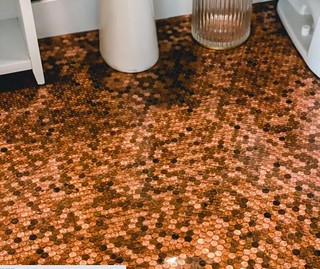 A woman has spent 16 hours painstakingly gluing $77 worth of pennies to her bathroom tiles, creating an incredible bespoke floor.
A woman has spent 16 hours painstakingly gluing $77 worth of pennies to her bathroom tiles, creating an incredible bespoke floor.
Jordan Darian, a creative director, decided to revamp her bathroom, which had beige walls, a standard white suite and wood-effect tiles.
Darian shared the transformation to her TikTok account on Friday, where it has already amassed more than 20 million views.
"$77 that no one can ever spend again," she joked, as she filmed herself individually sticking down each coin by hand.
To read the complete article, see:
Woman Spends 16 Hours Painstakingly Gluing $77 Worth of Pennies to Her Floor
(https://www.newsweek.com/woman-spend-16-hours-gluing-77-worth-pennies-floor-1598174)

